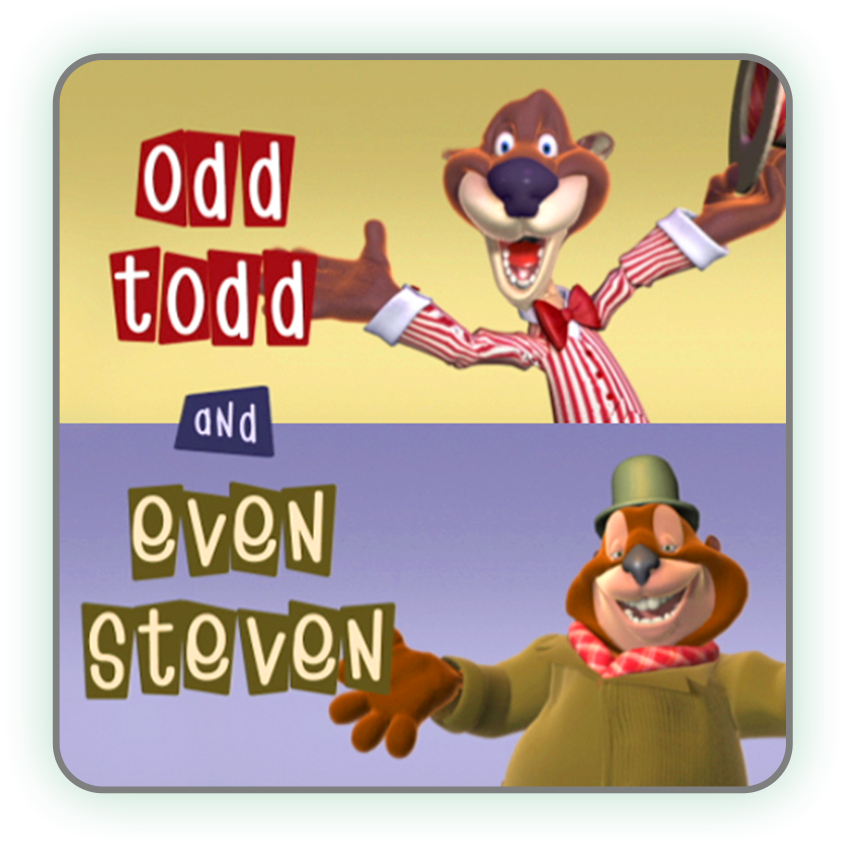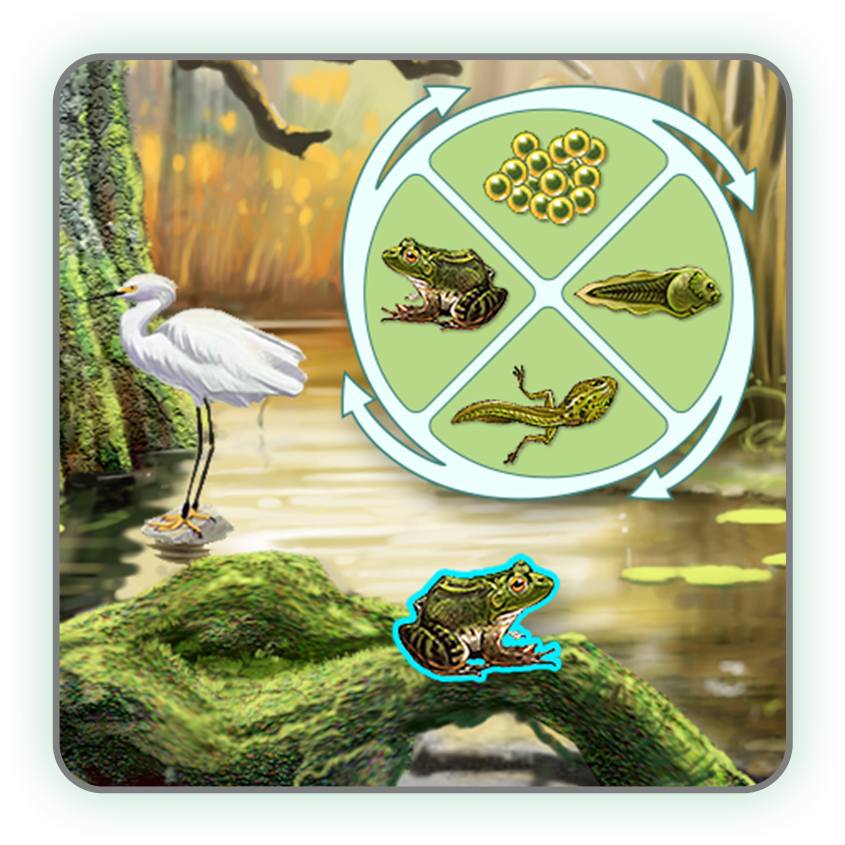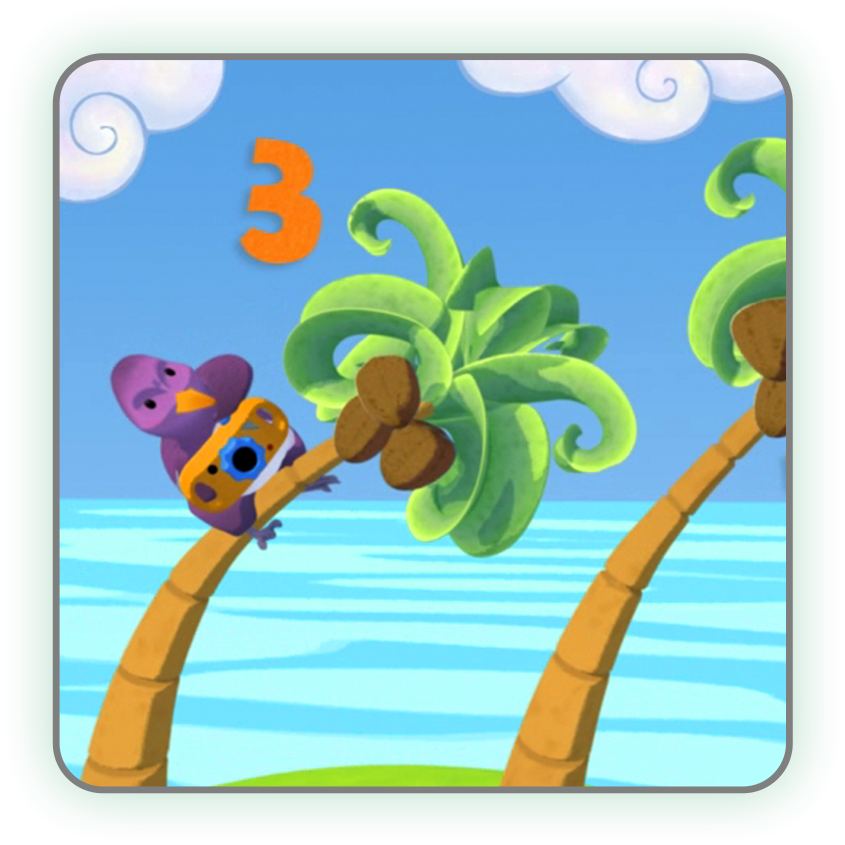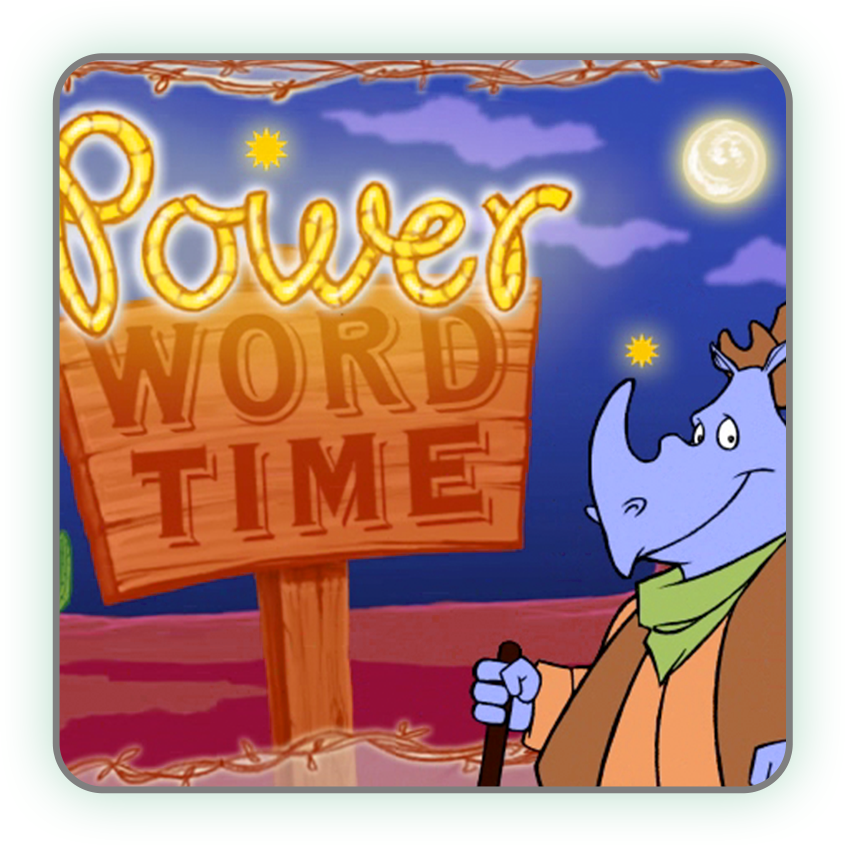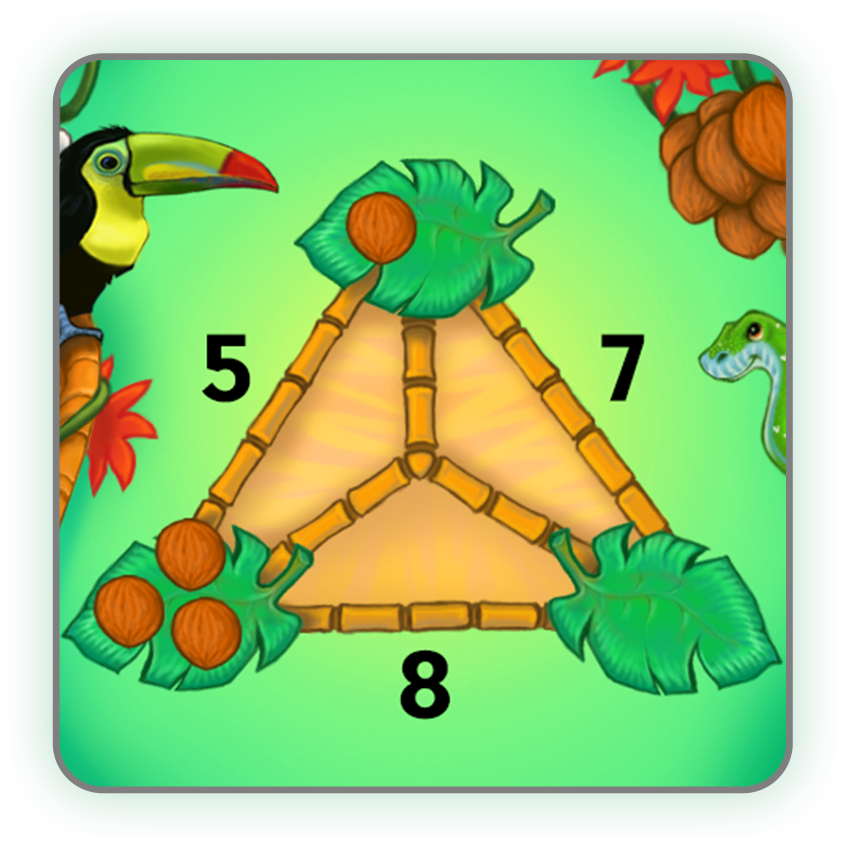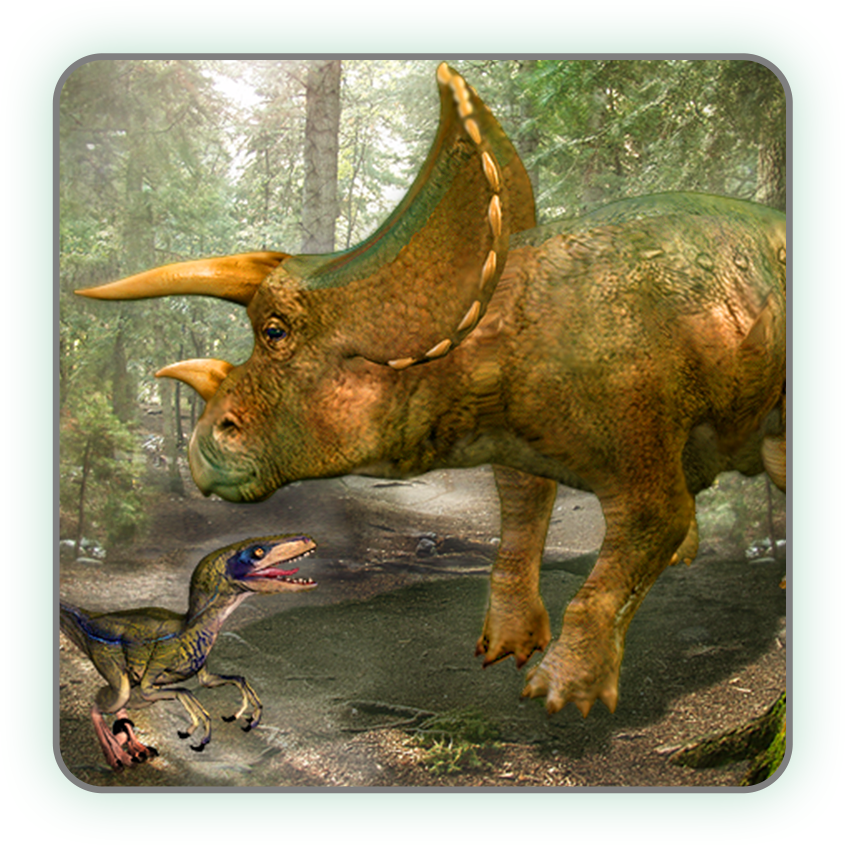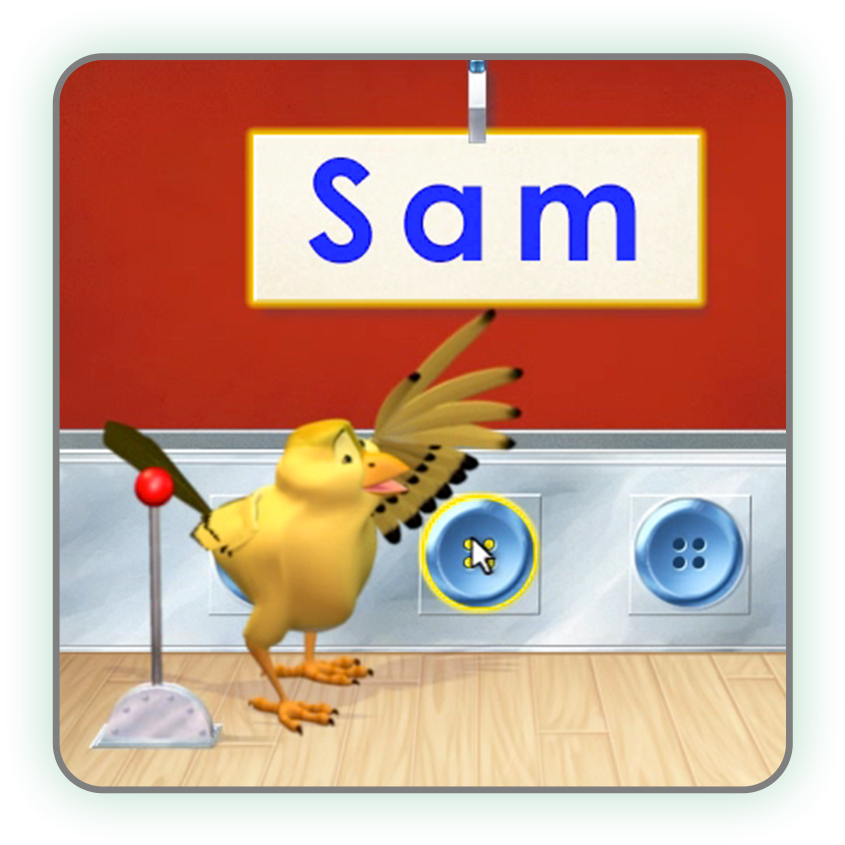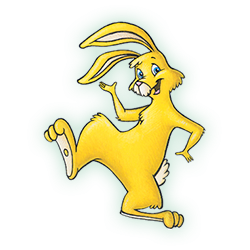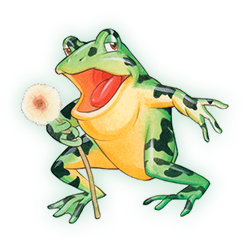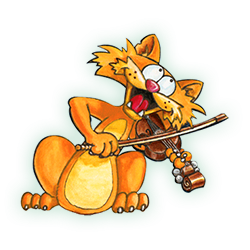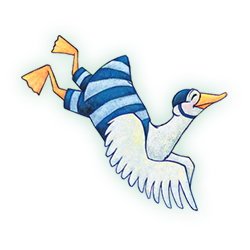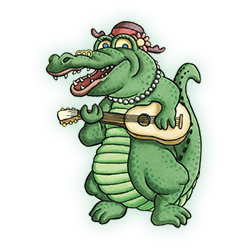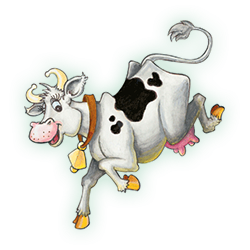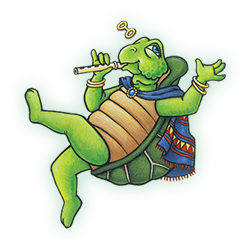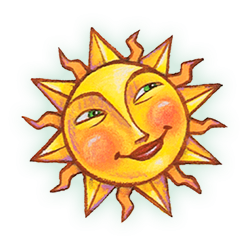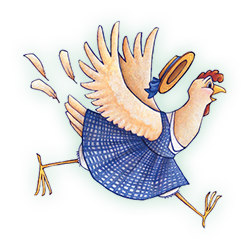Waterford Early Learning
Waterford Early Learning is an adaptive computer-based learning program originally intended for kindergarten to 2nd-grade students in a school setting. With a comprehensive curriculum of English language arts, mathematics, and science — known as Early Reading and Early Math & Science — each of the three levels takes a full school year to complete. The program consists of 500+ lessons, 7,000+ activities, 360 books, 330 songs, and includes take-home books, music CDs, sing-along and activity DVDs, and teacher guides.
Roles: Creative Director · Producer
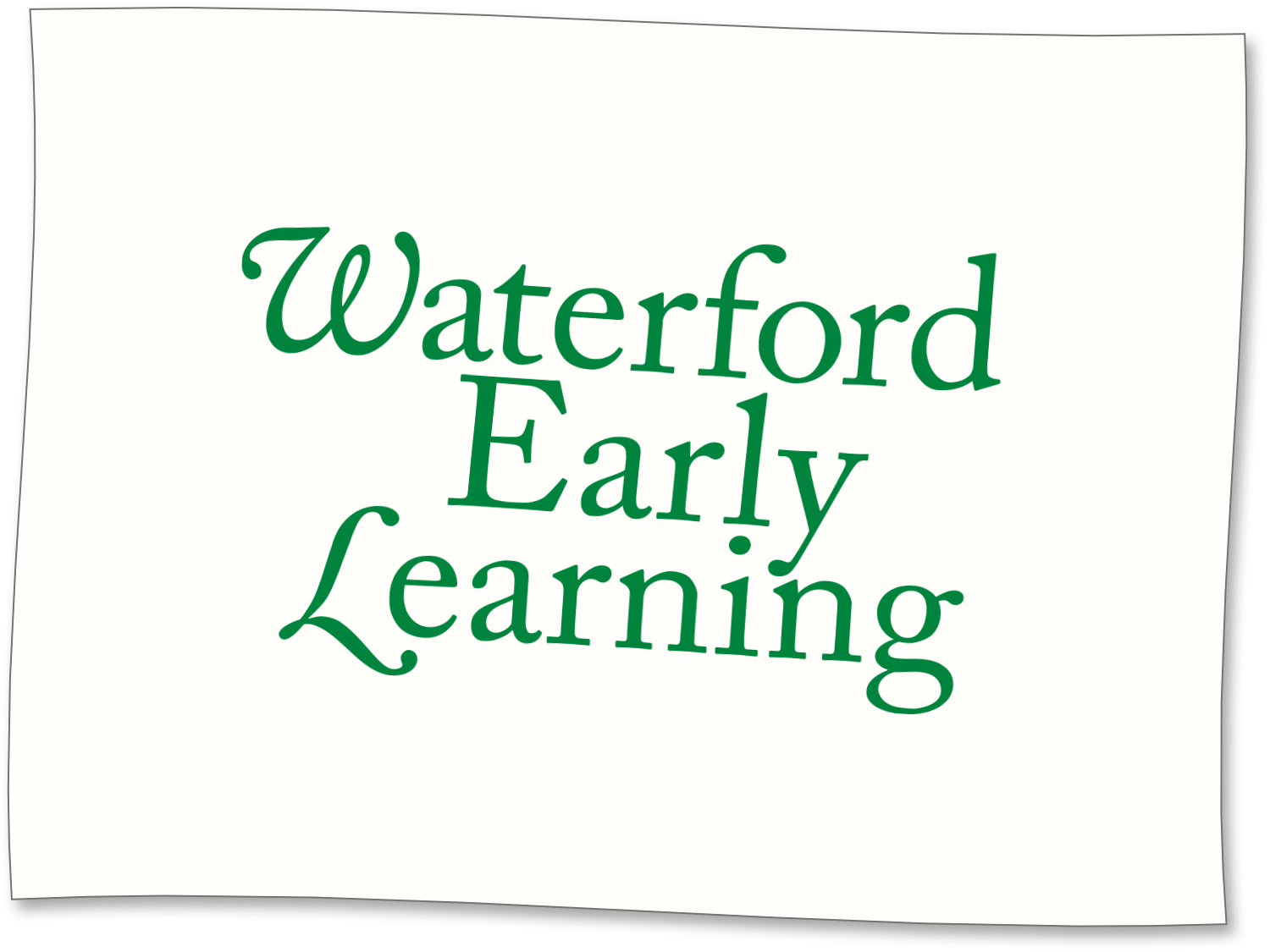
The serif typeface of the product logo, which represents a suite of programs, was chosen for its playful formality.

A sampling of activities from Waterford Early Learning: lessons, assessments, songs, games, books, DVDs, worksheets, and newsletters.
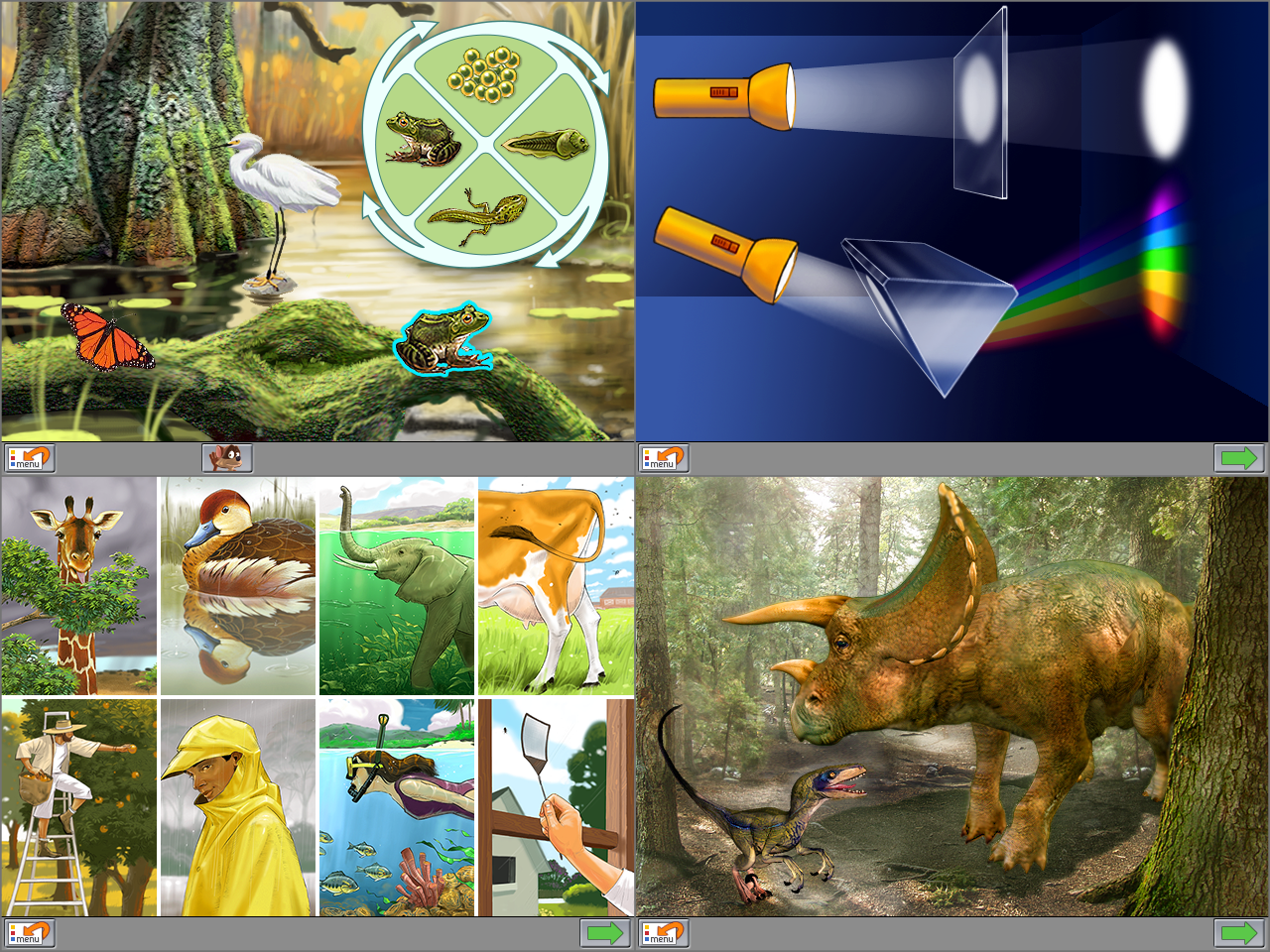
Examples of science instruction and practice activities: animal life cycles, colors of light, animal adaptations, and dinosaurs/fossils.
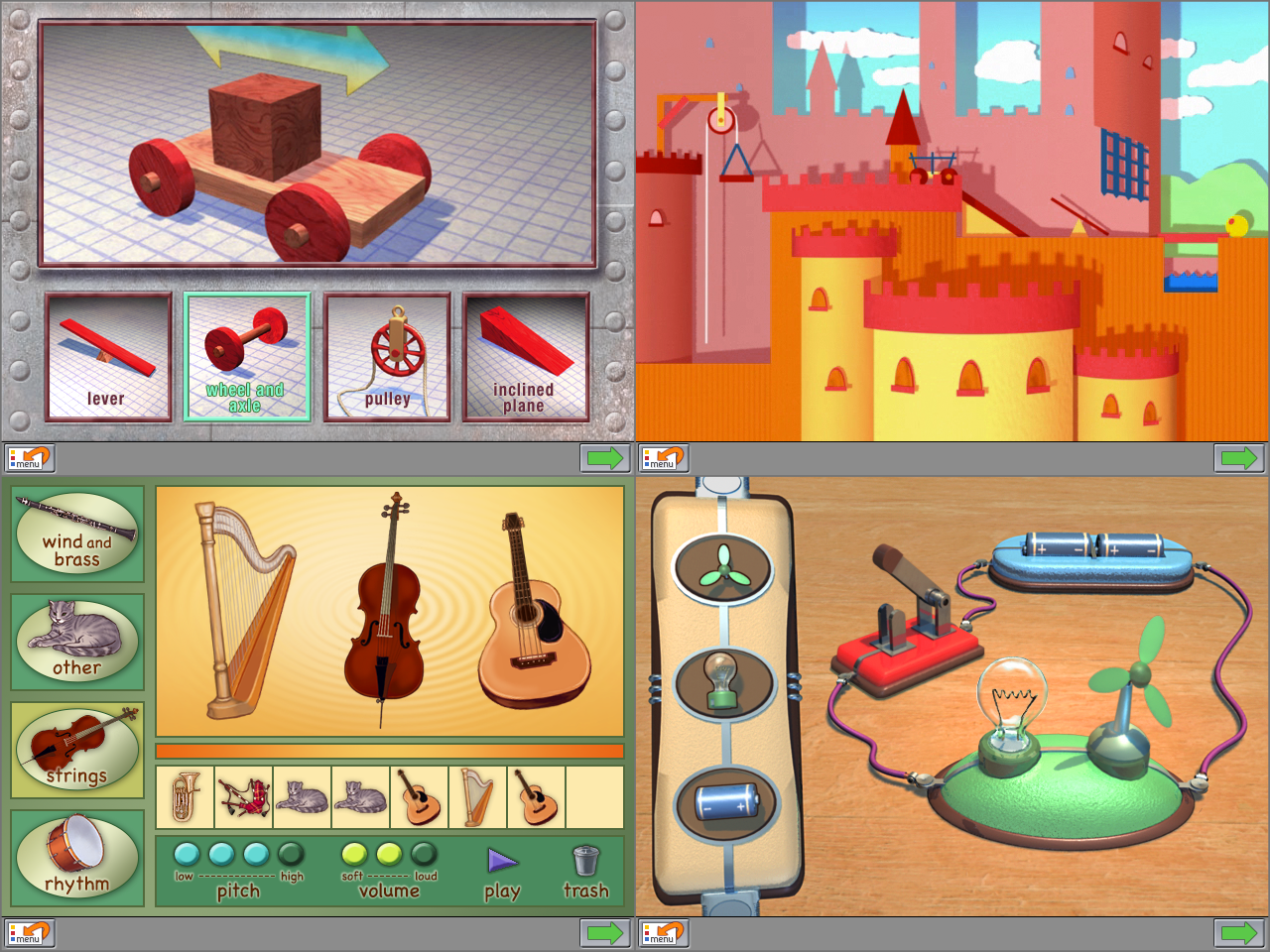
Examples of science exploration activities: using simple machines to complete tasks, exploring pitch and volume, and creating circuits.
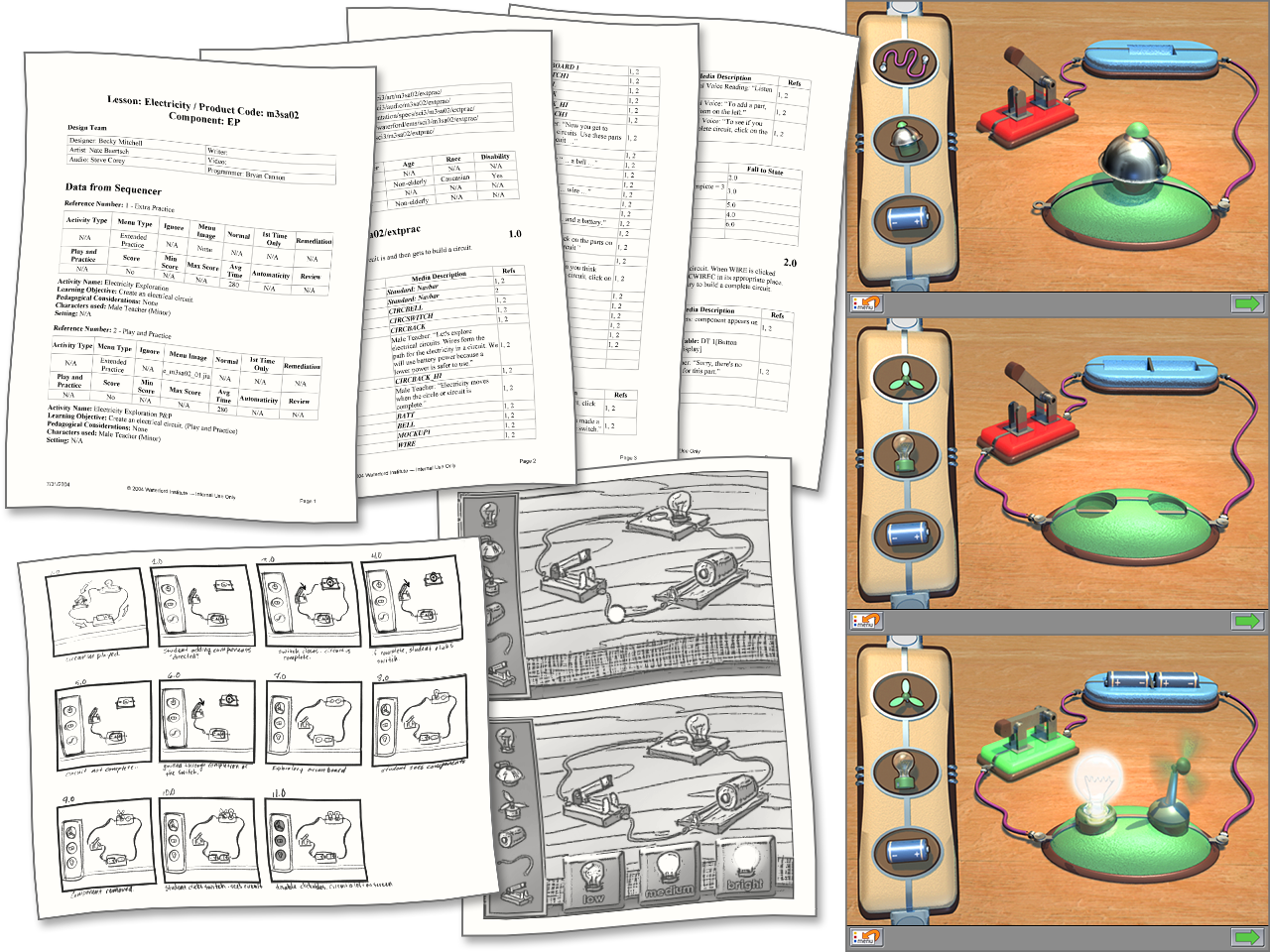
A typical activity design includes a state-by-state spec, wireframes, and sketches developed by the design team to create a prototype.

Examples of daily science exploration activities: working cooperatively, observing the night sky, and observing changes of a system.
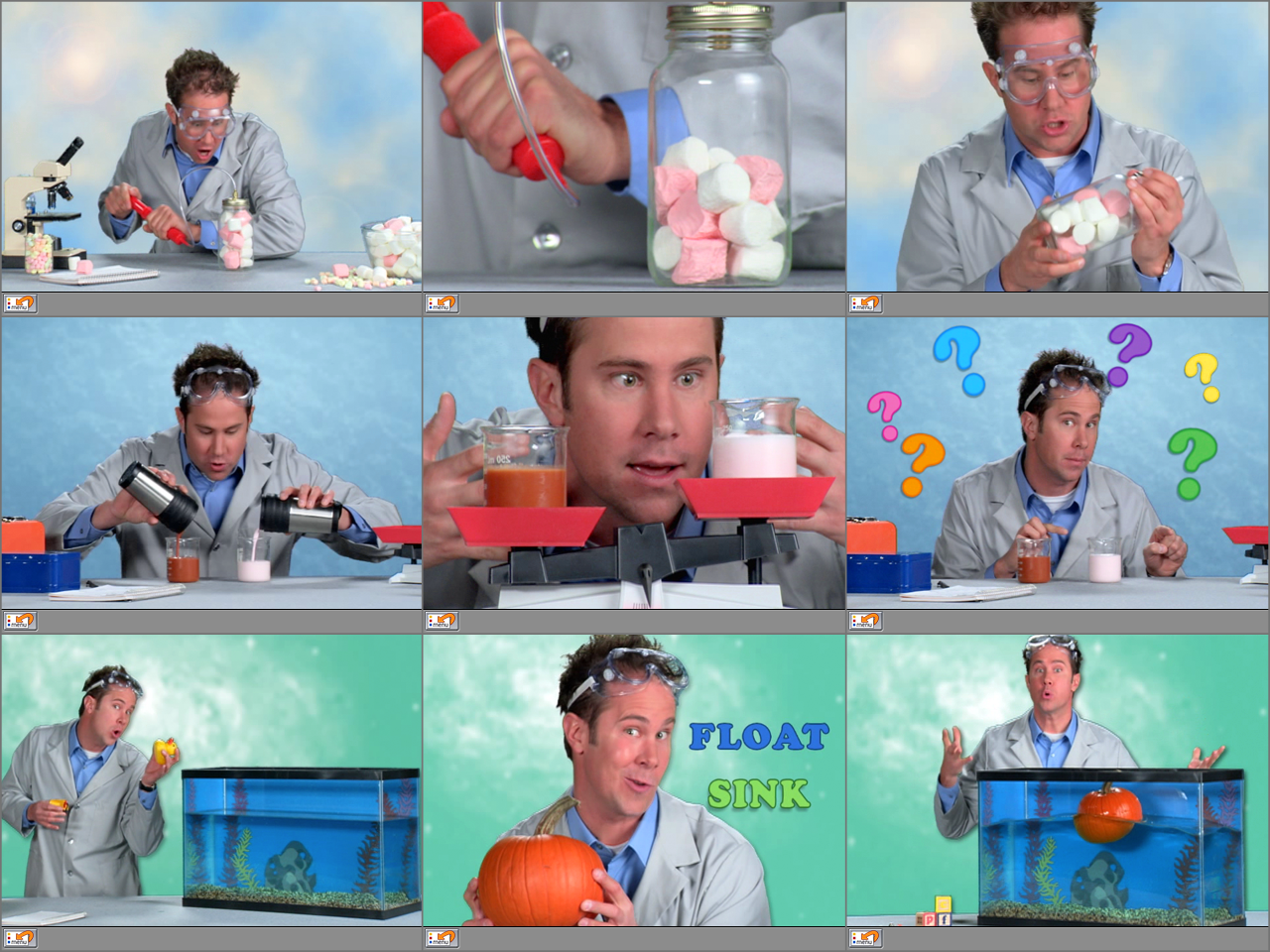
Examples of science experiments, hosted by Josh, The Scientist. The student develops hypotheses and records their conclusions.
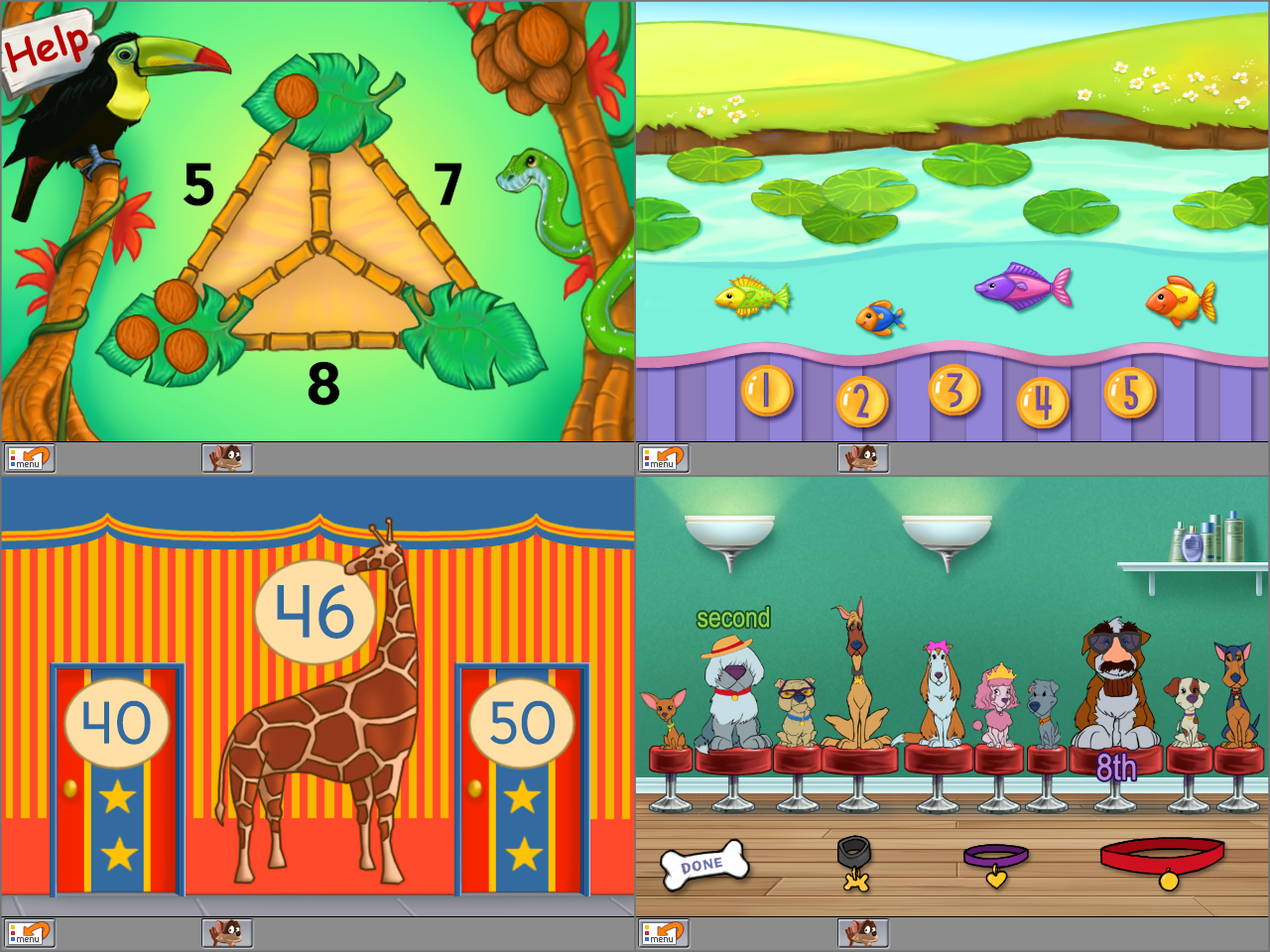
Examples of math instruction and practice activities: missing addends, making and adding groups, rounding to tens, and ordinal numbers.
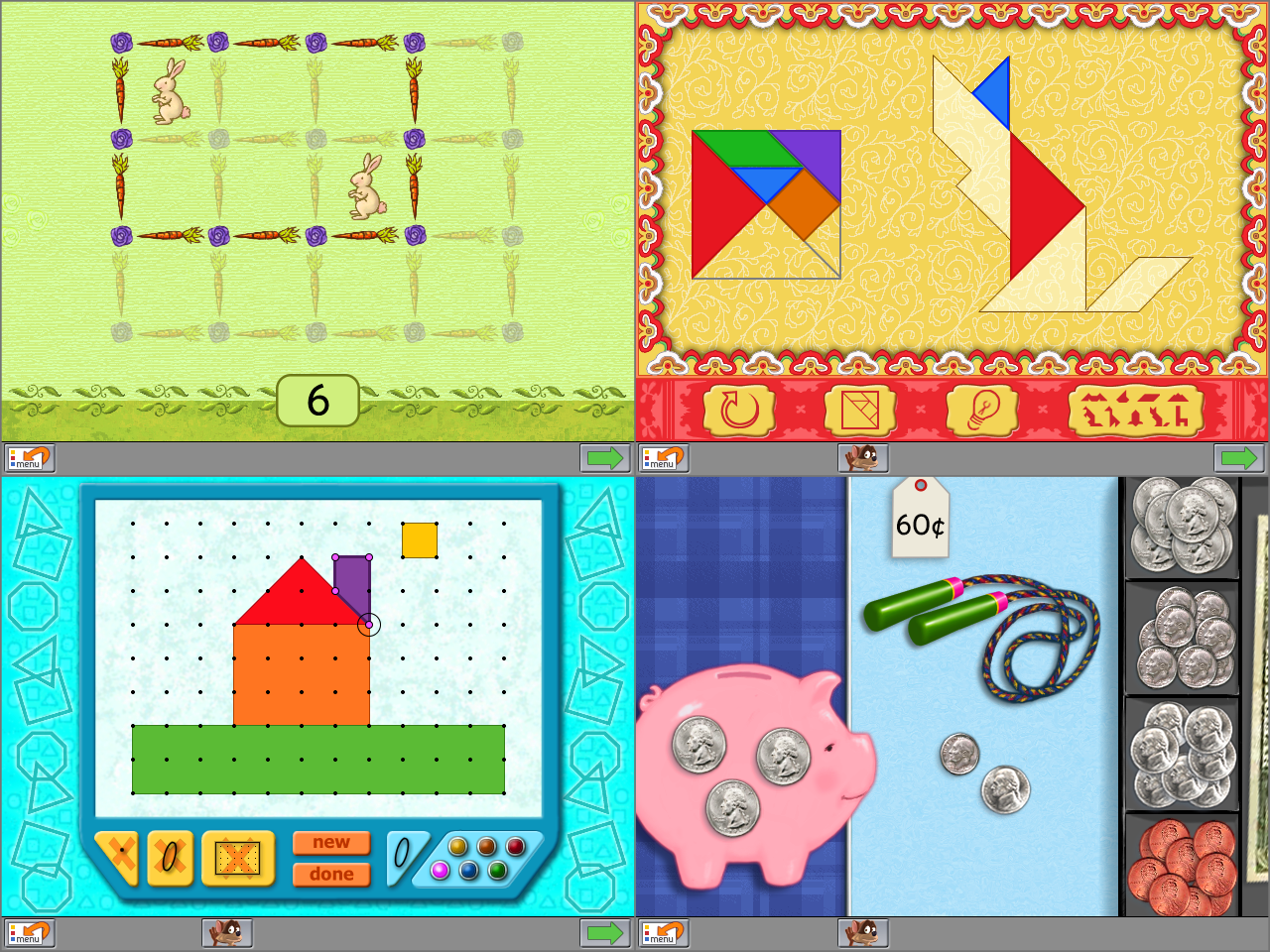
Examples of math extended practice activities: finding perimeters, solving tangrams, exploring a geoboard, and making change.
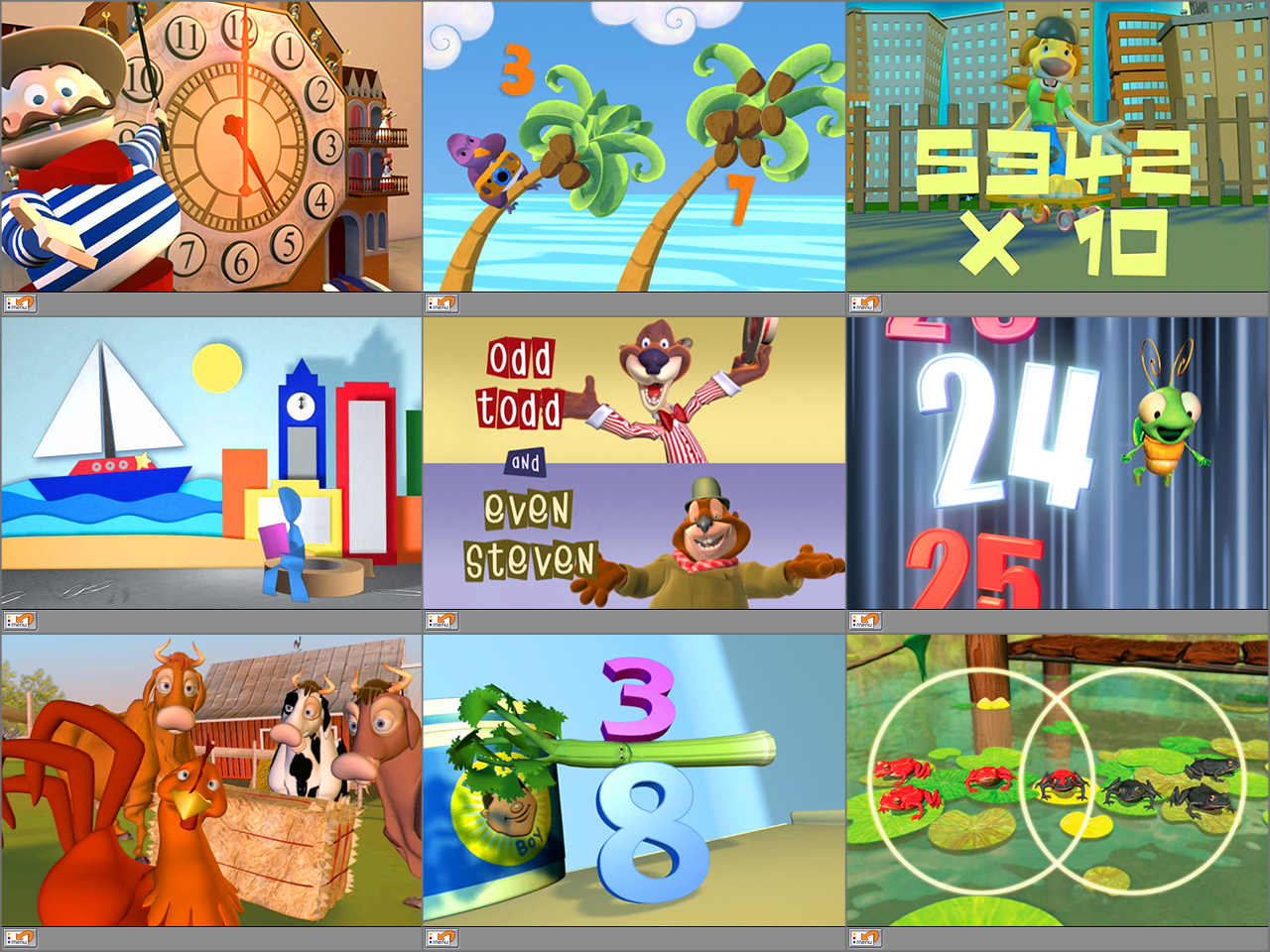
Stills from several math songs, including: telling time, more/fewer than, multiplication by 10, odd and even numbers, and Venn diagrams.
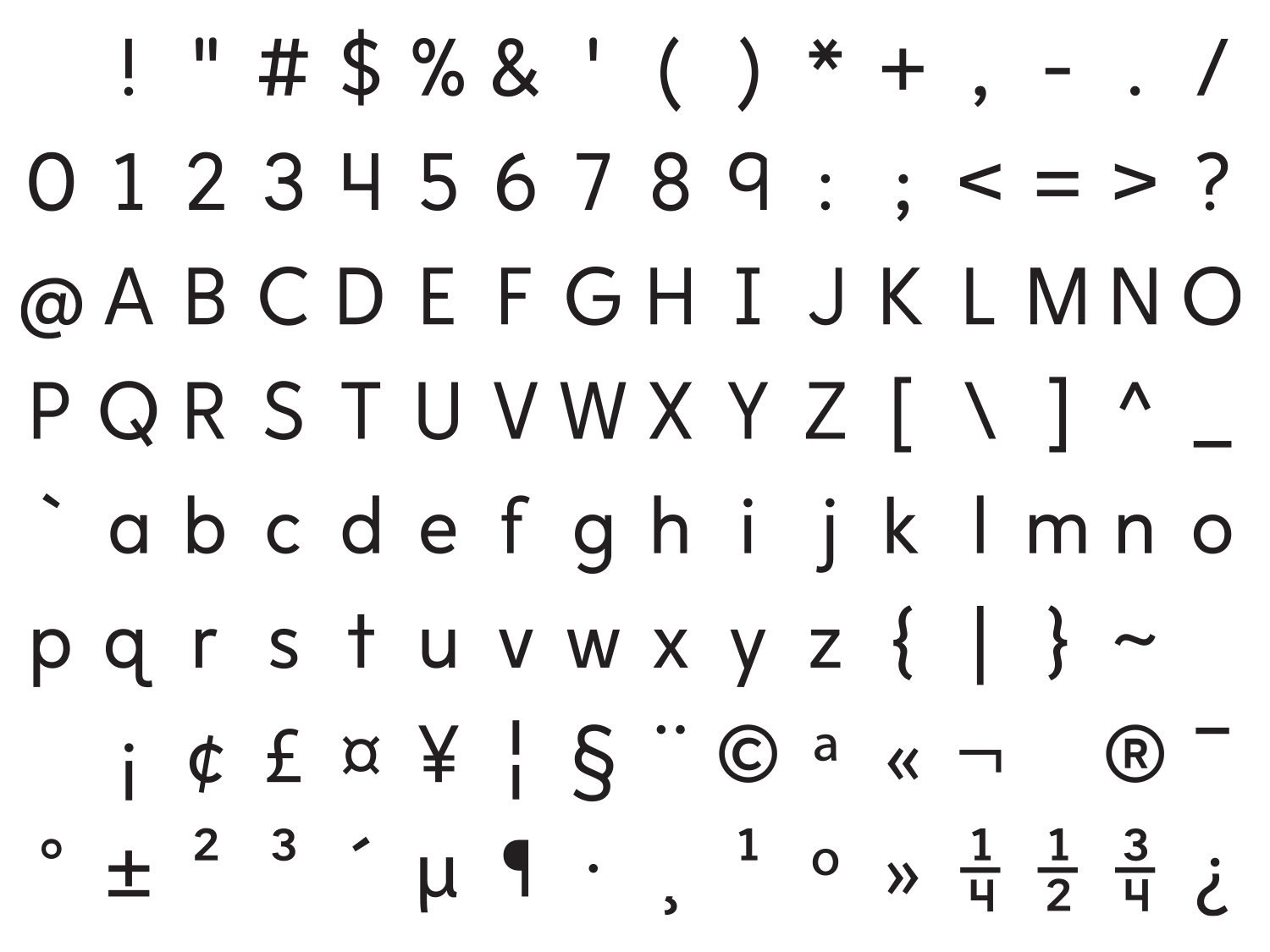
This ball-and-stick font was developed to closely align with how children typically learn to print letters and numbers.
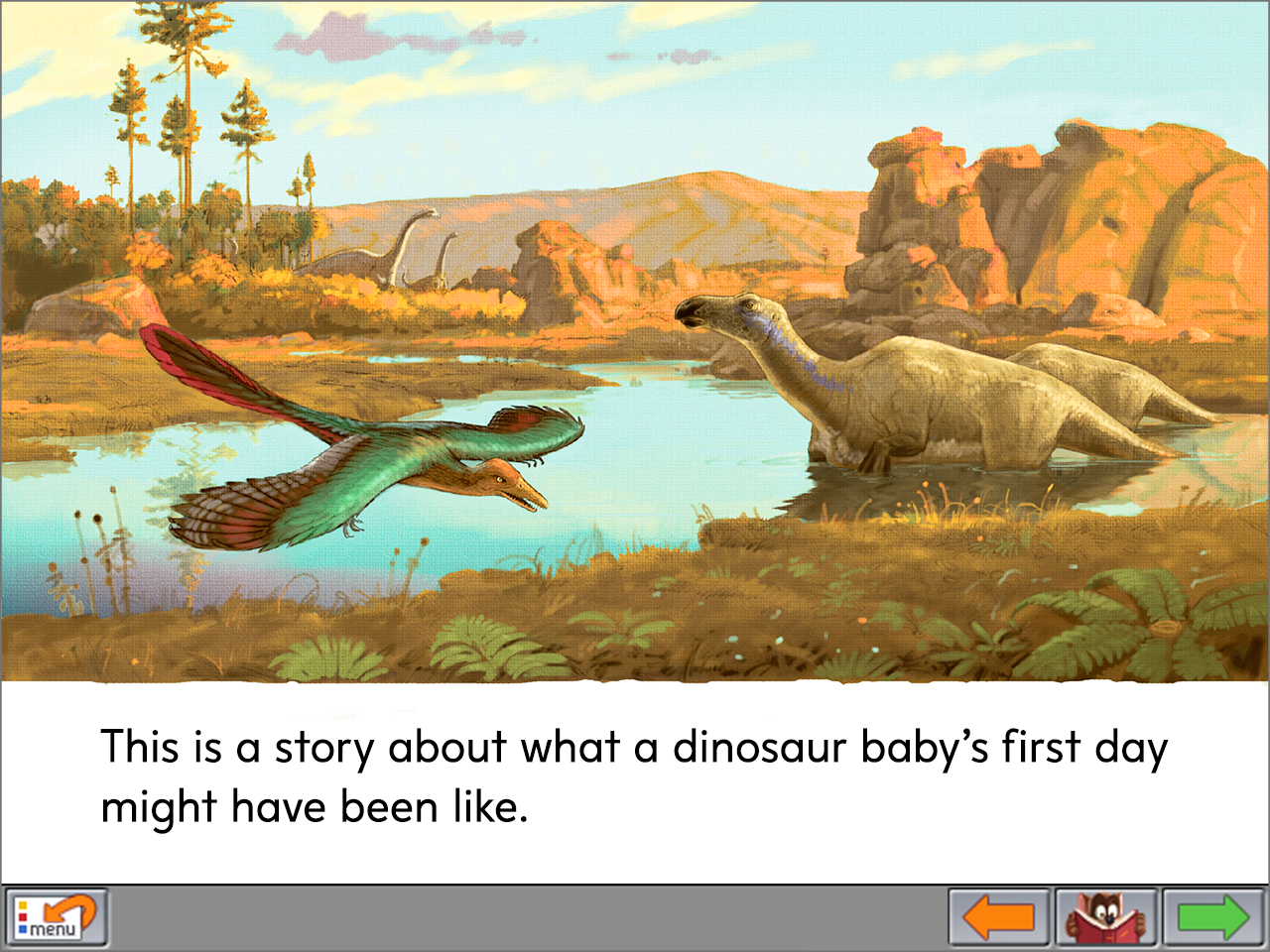
A page from a science concept book, A Dinosaur’s First Day. There are 46 science books that reinforce concepts introduced in activities.
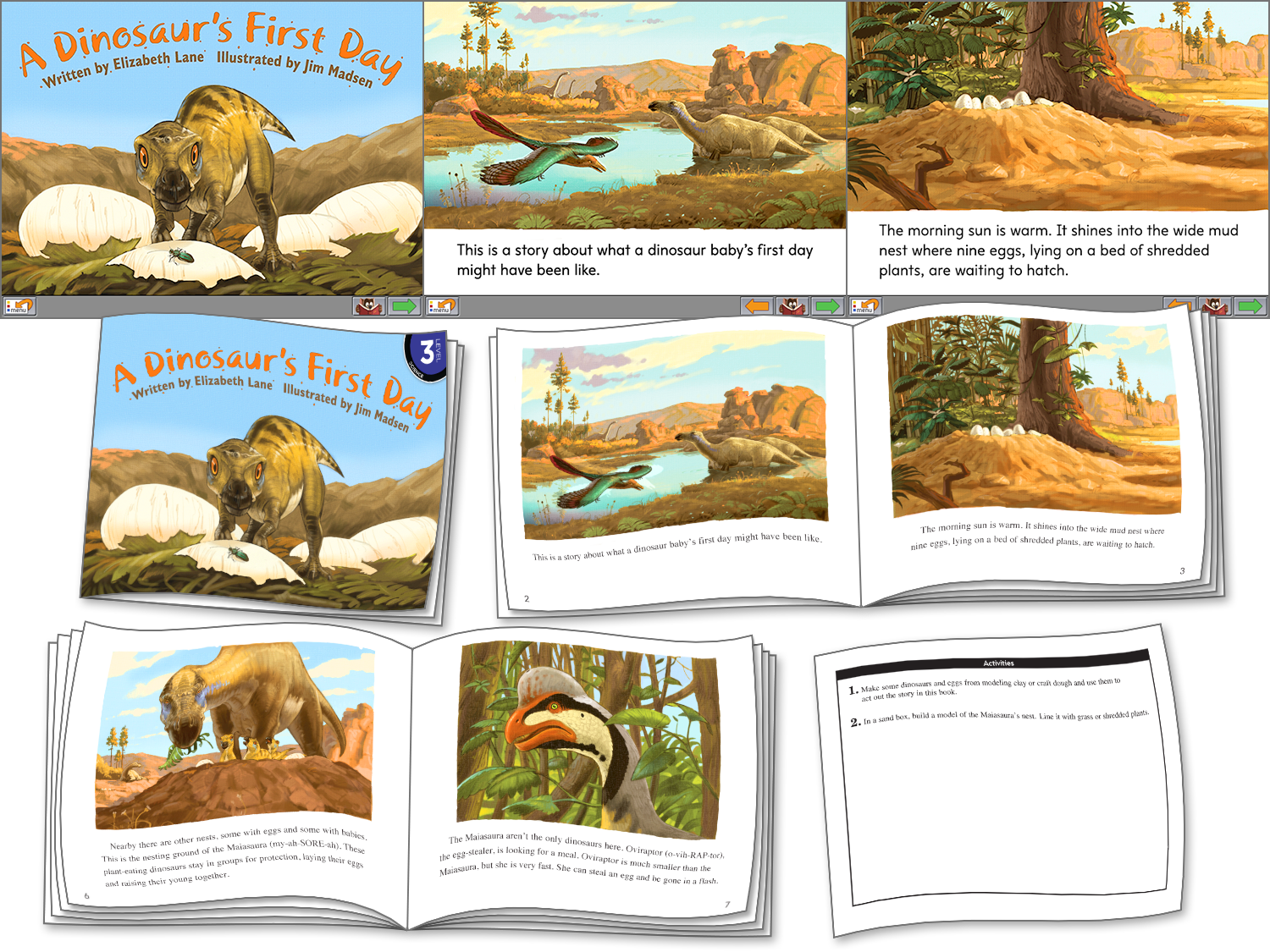
Science concept books, like A Dinosaur’s First Day, are available to the student in both online and take-home printed versions.
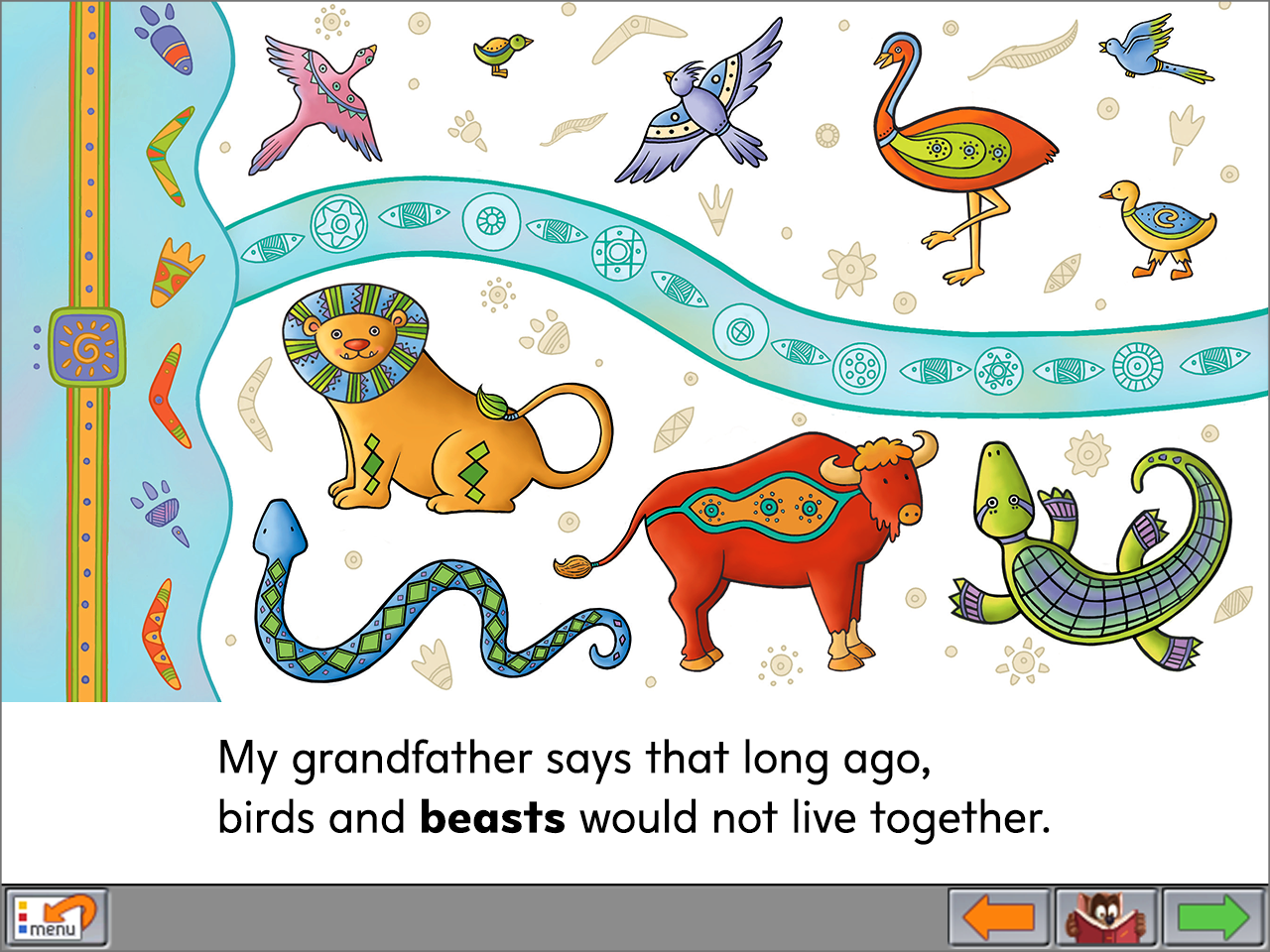
A page from a math concept book, The Birds, the Beasts, and the Bat, a story about Venn diagrams. There are 70 math concept books.
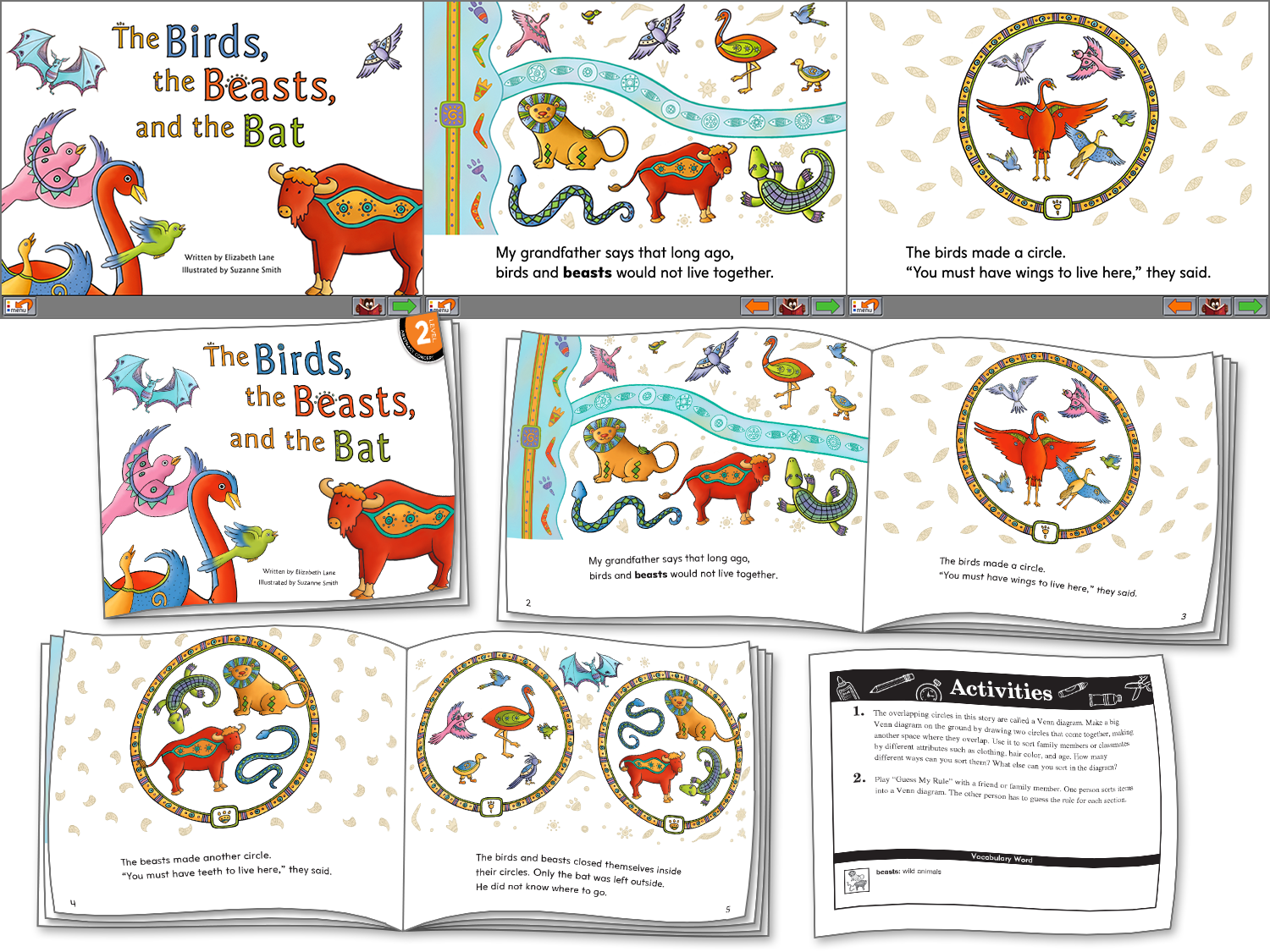
Math concept books, like The Birds, the Beasts, and the Bat, were designed to nurture inquiry and to reinforce lesson concepts.
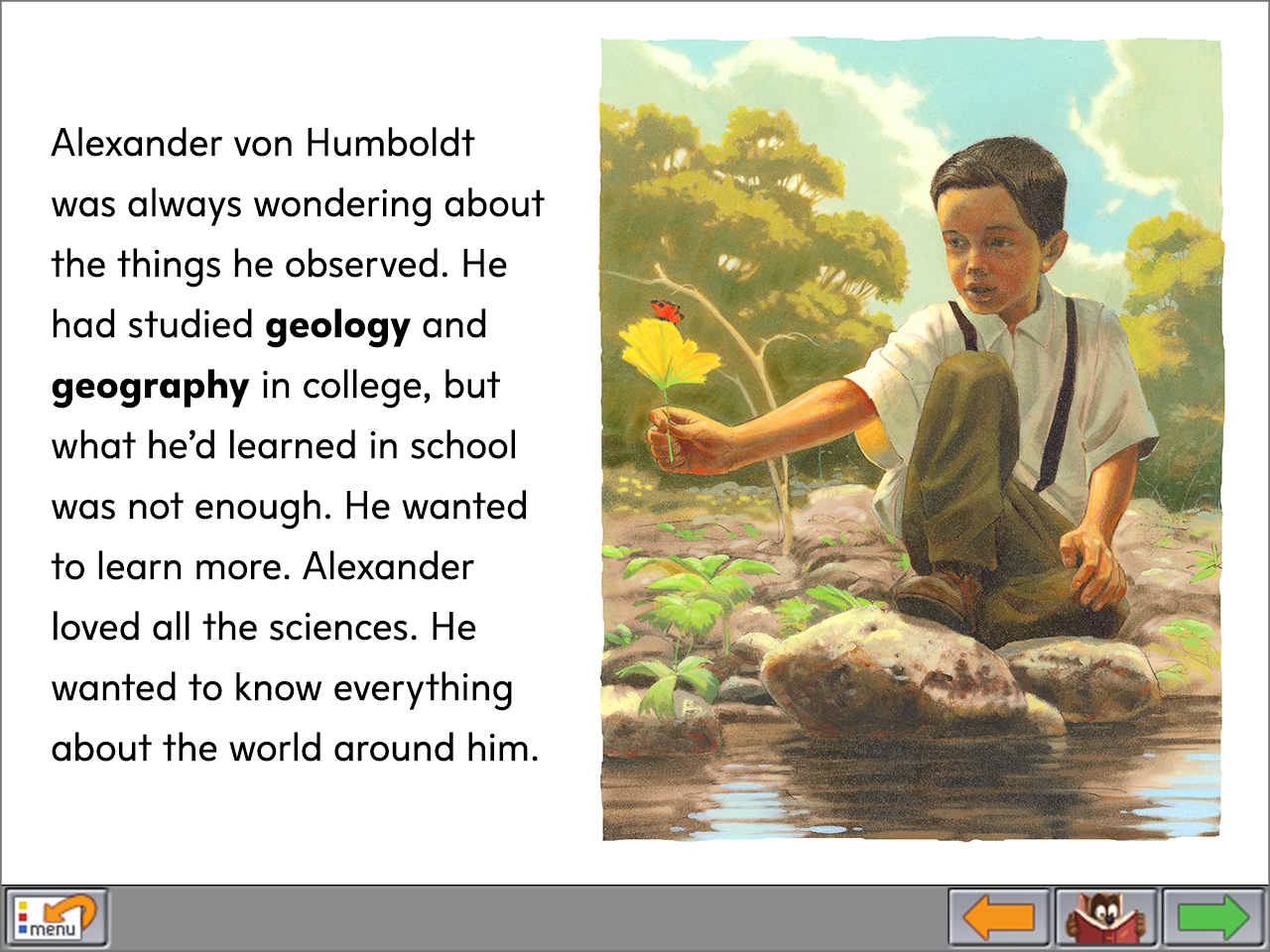
A page from a scientist biography, I Want to Be a Scientist Like Alexander von Humboldt. There are 18 biographies in the program.
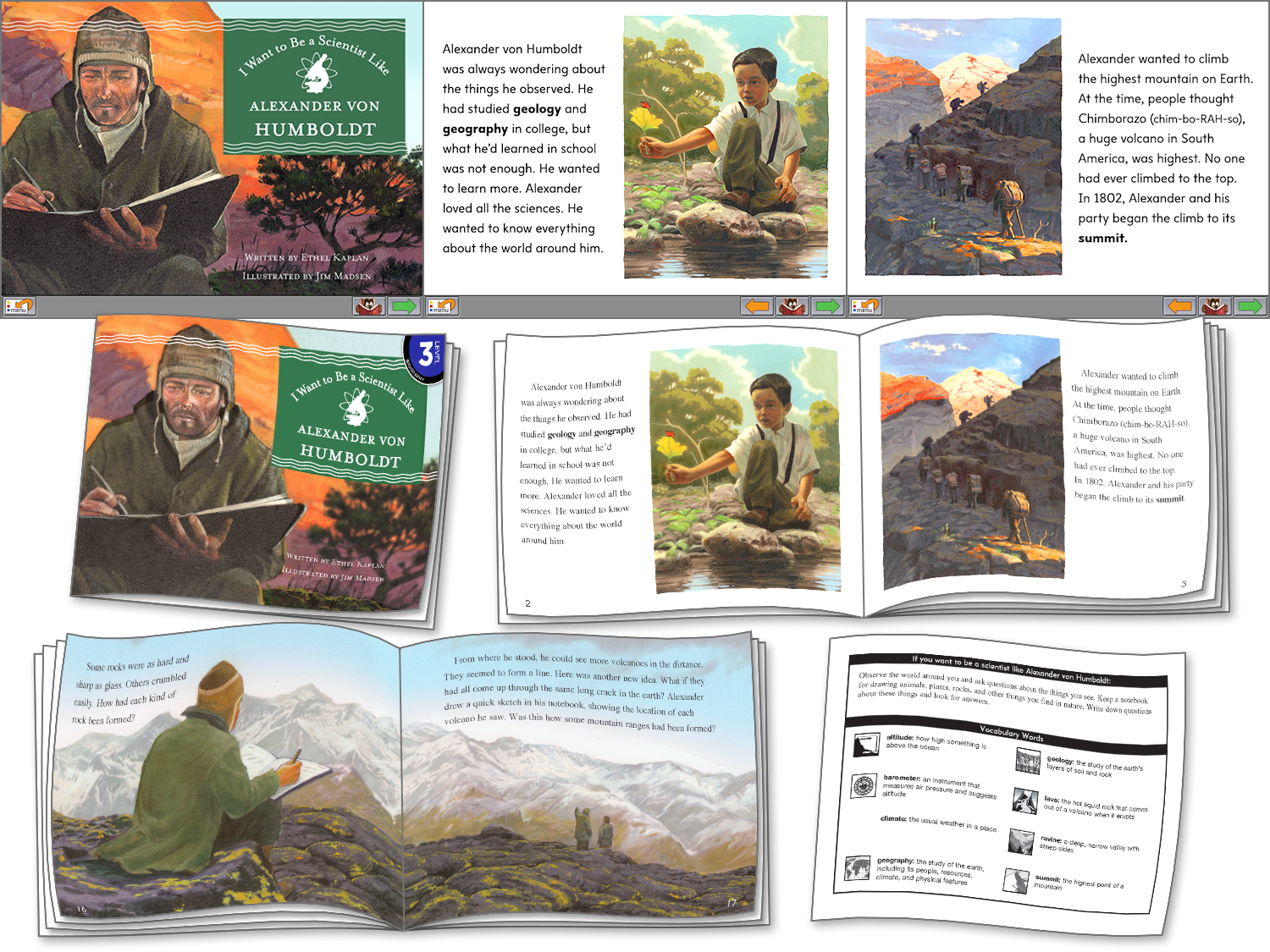
Biographies, like I Want to Be a Scientist Like Alexander von Humboldt, were designed to teach the characteristics of scientists.
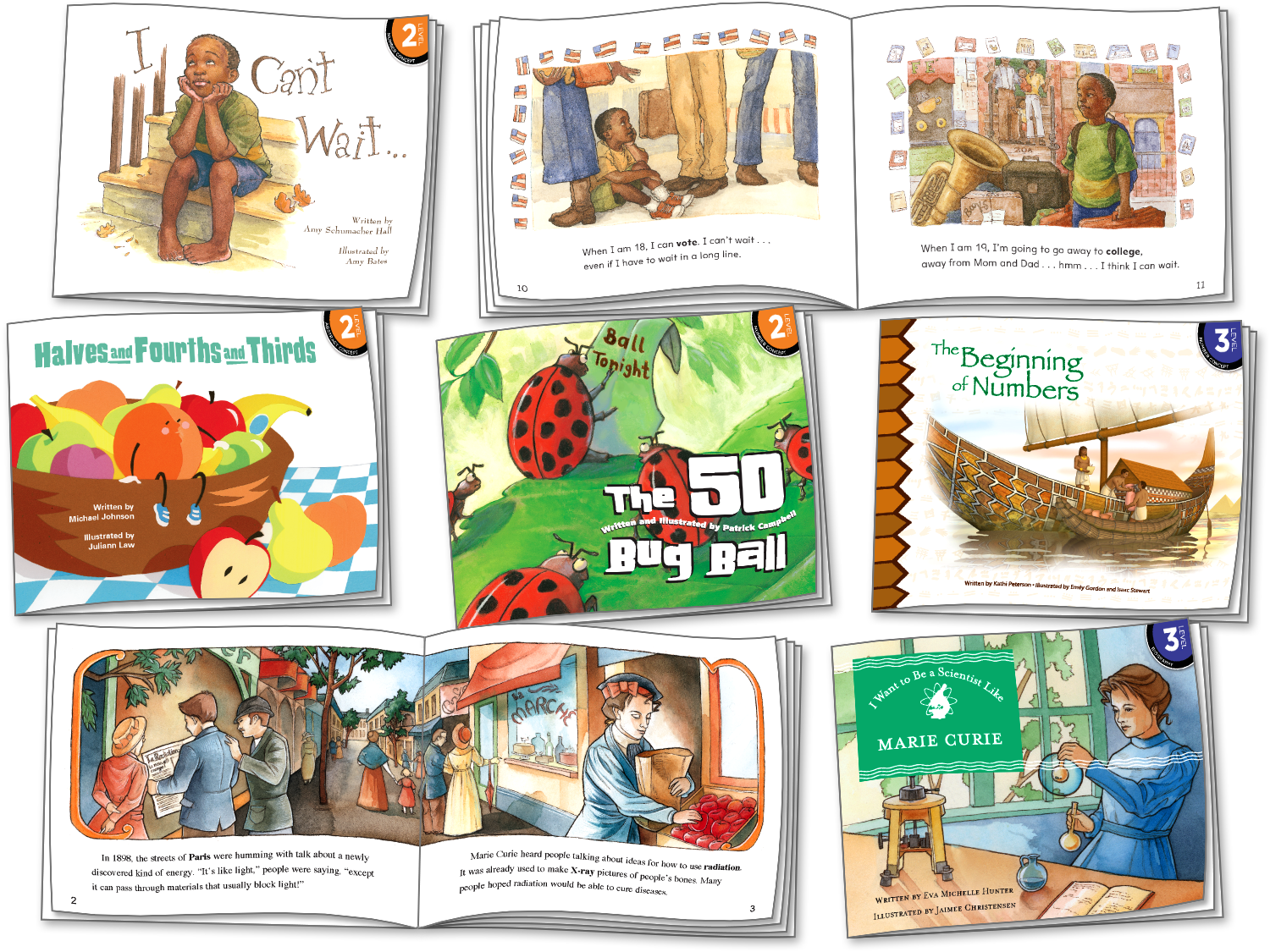
Some covers and inside page layouts of the print versions of math and science books, which are meant to be taken home by the student.
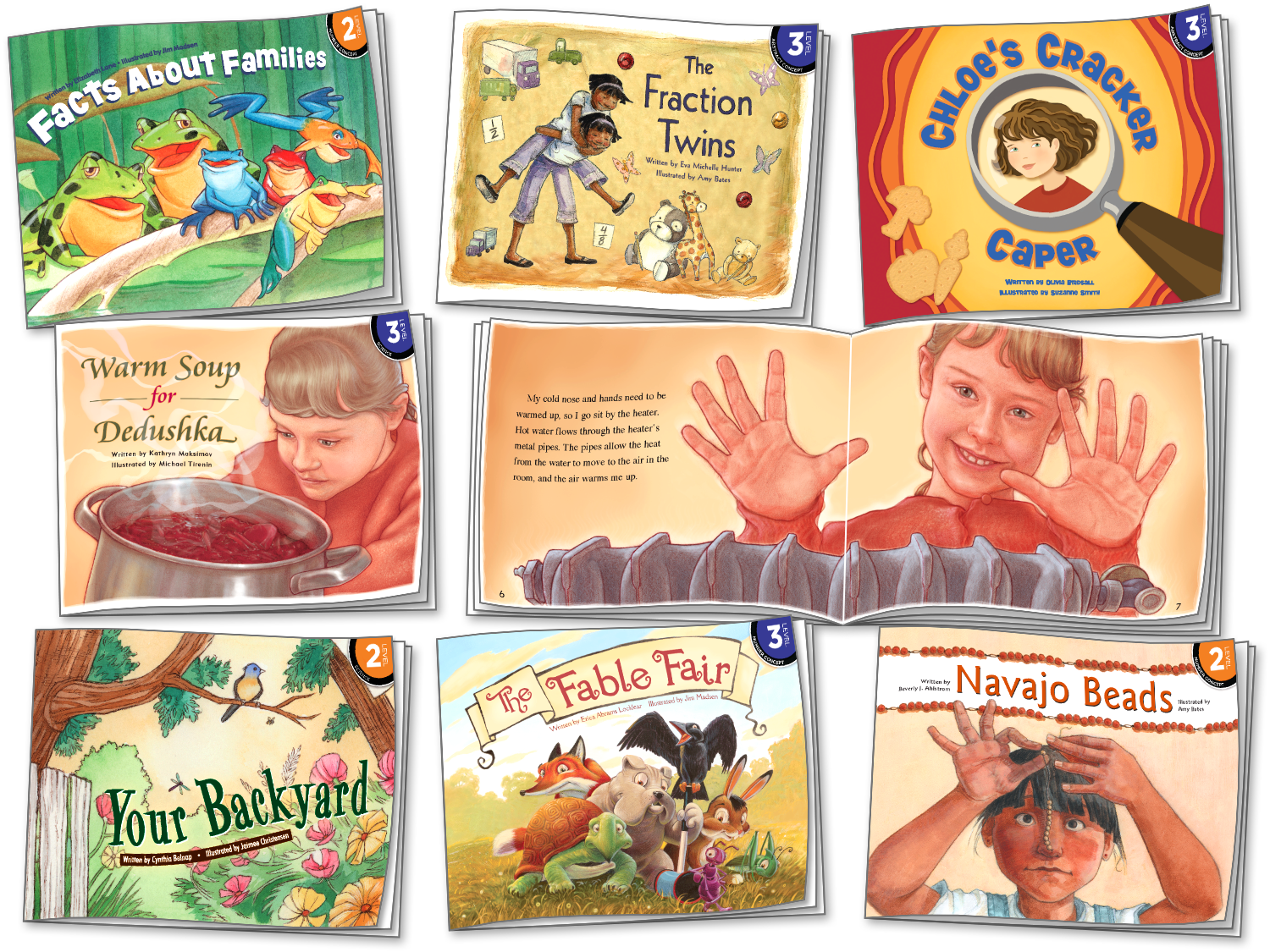
Several more examples of the illustrated covers and inside page layouts of the print versions of the math and science concept books.
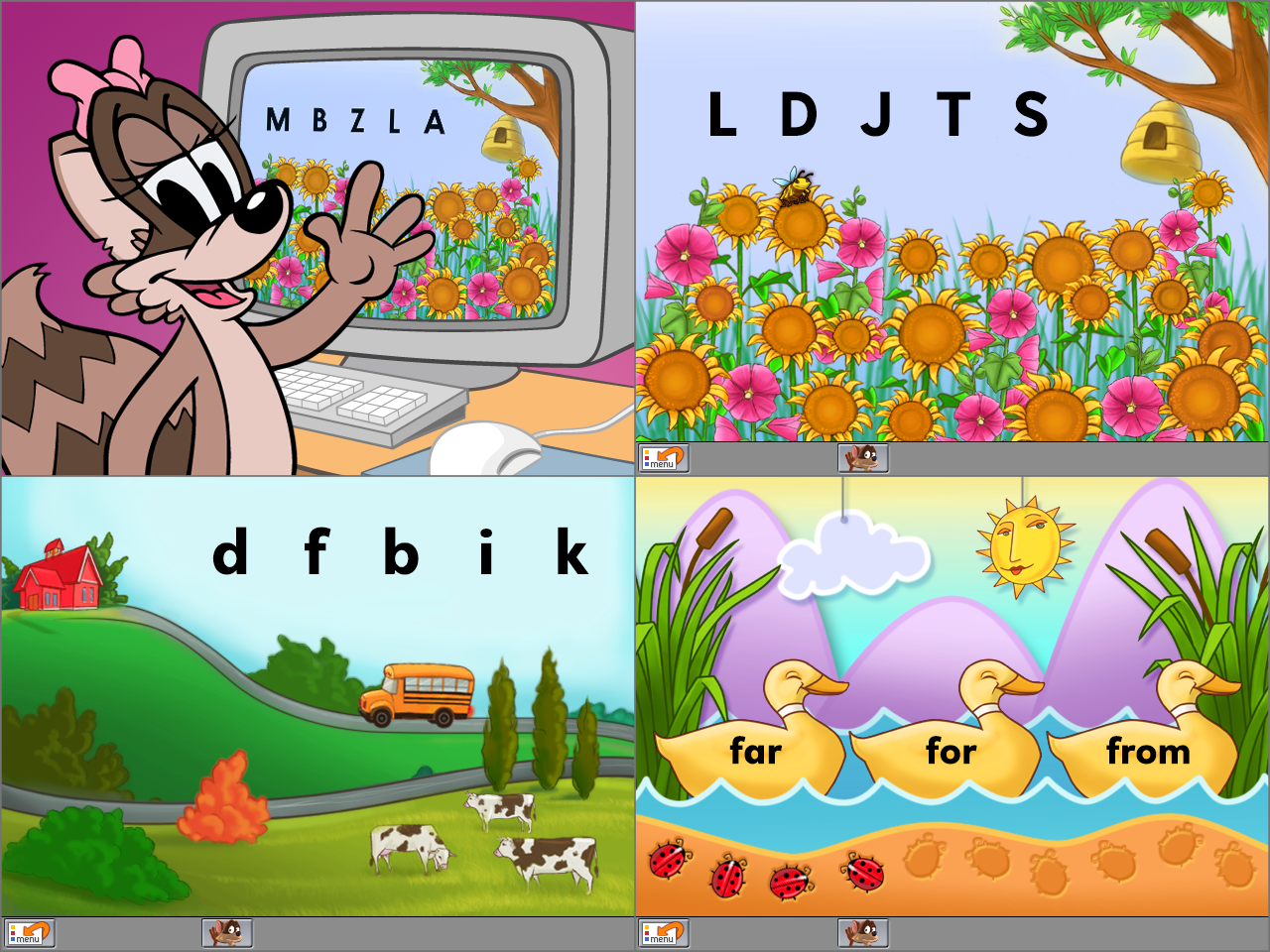
Several sub-tests of the Reading Placement tool, which assigns the student to the appropriate starting point within the reading program.
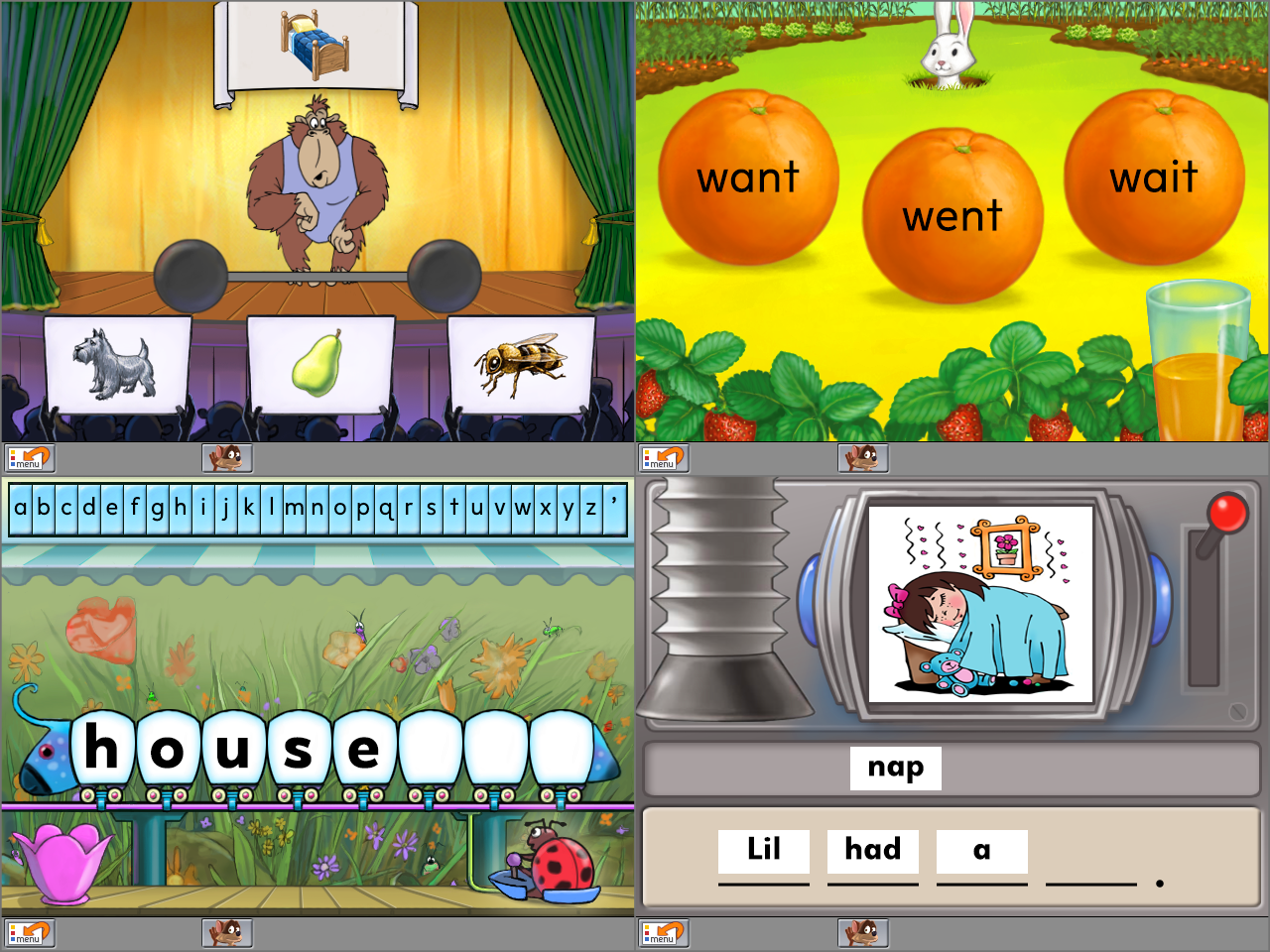
Several more examples of the sub-tests that make up the Reading Placement tool, which the student completes during their first session.
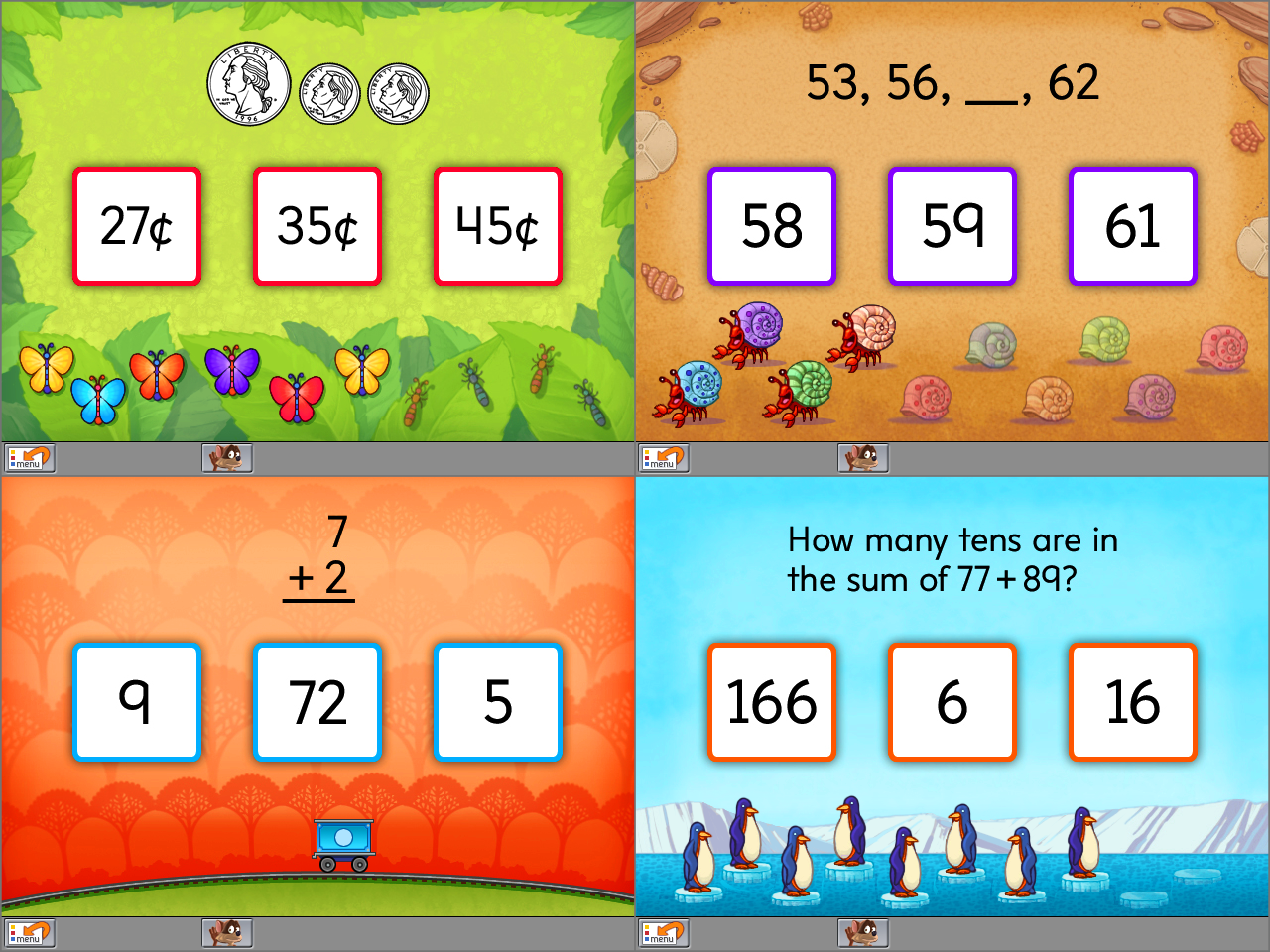
Several sub-tests of the Math Placement tool, which assigns the student to the appropriate starting point within the math program.
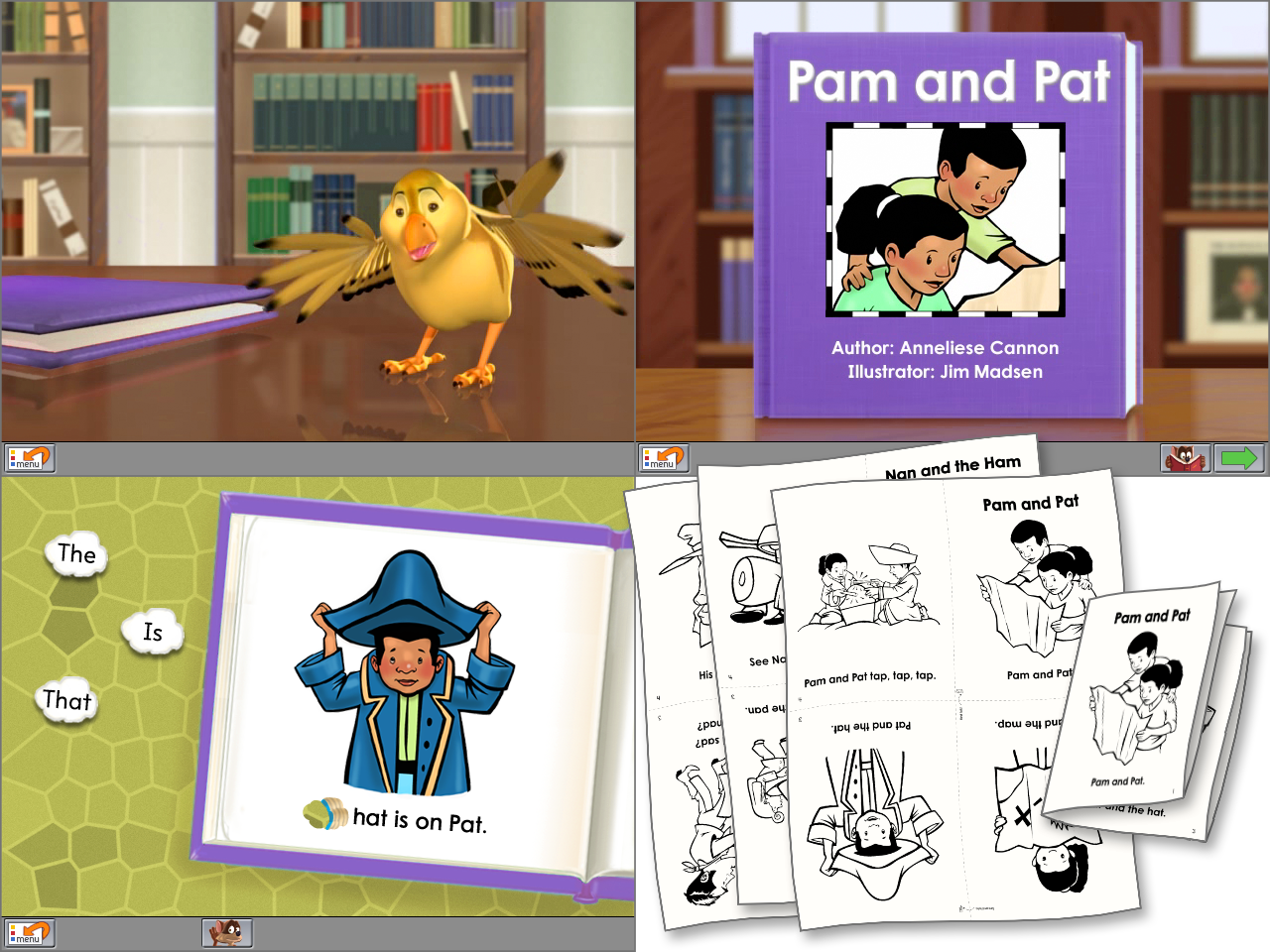
These decodable word activities, part of a new phonological awareness strand, include instruction, practice, and one-page books.
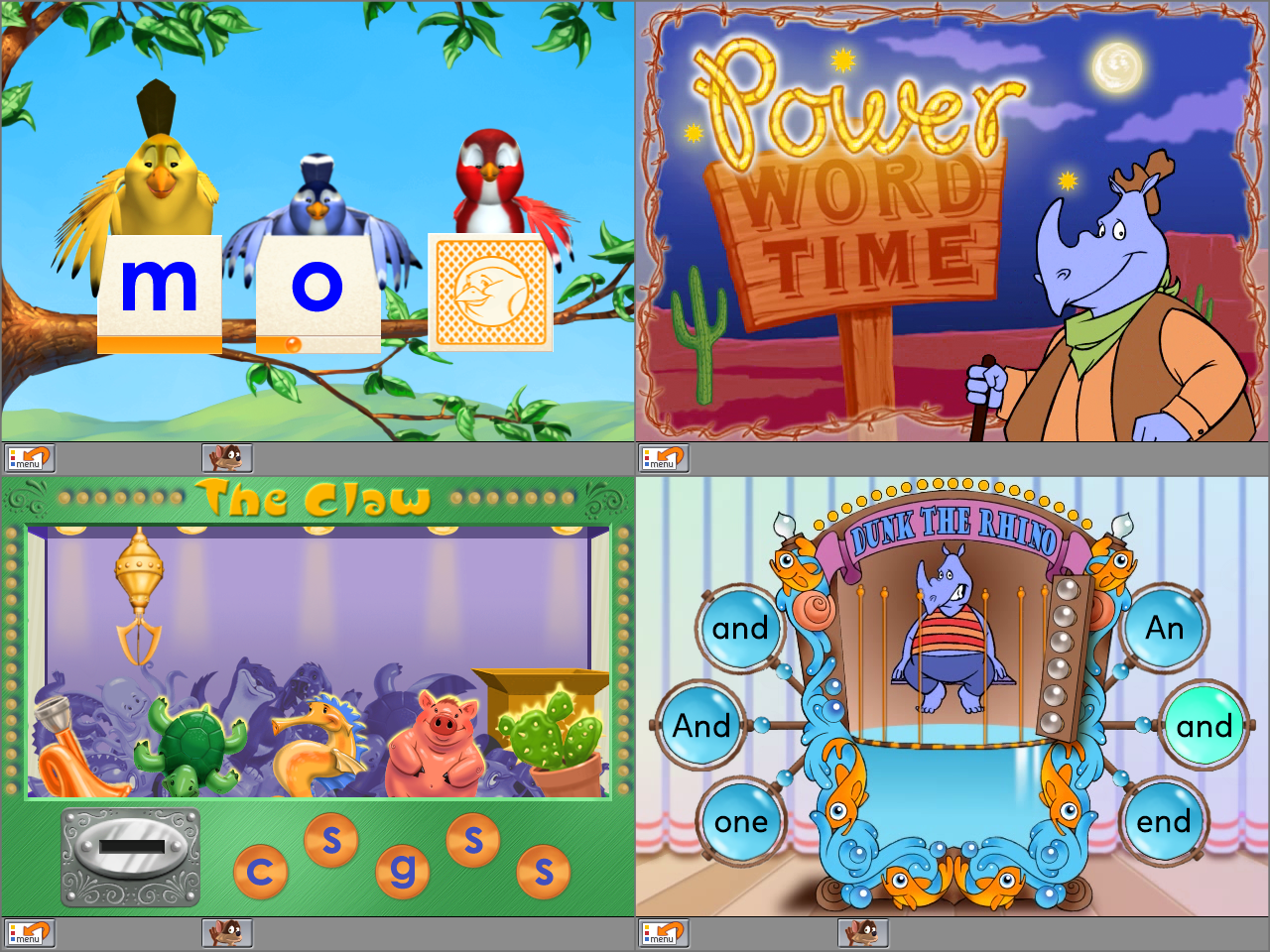
Some more examples of phonological awareness activities: blend decodable words, power words, and letter sound assessment.
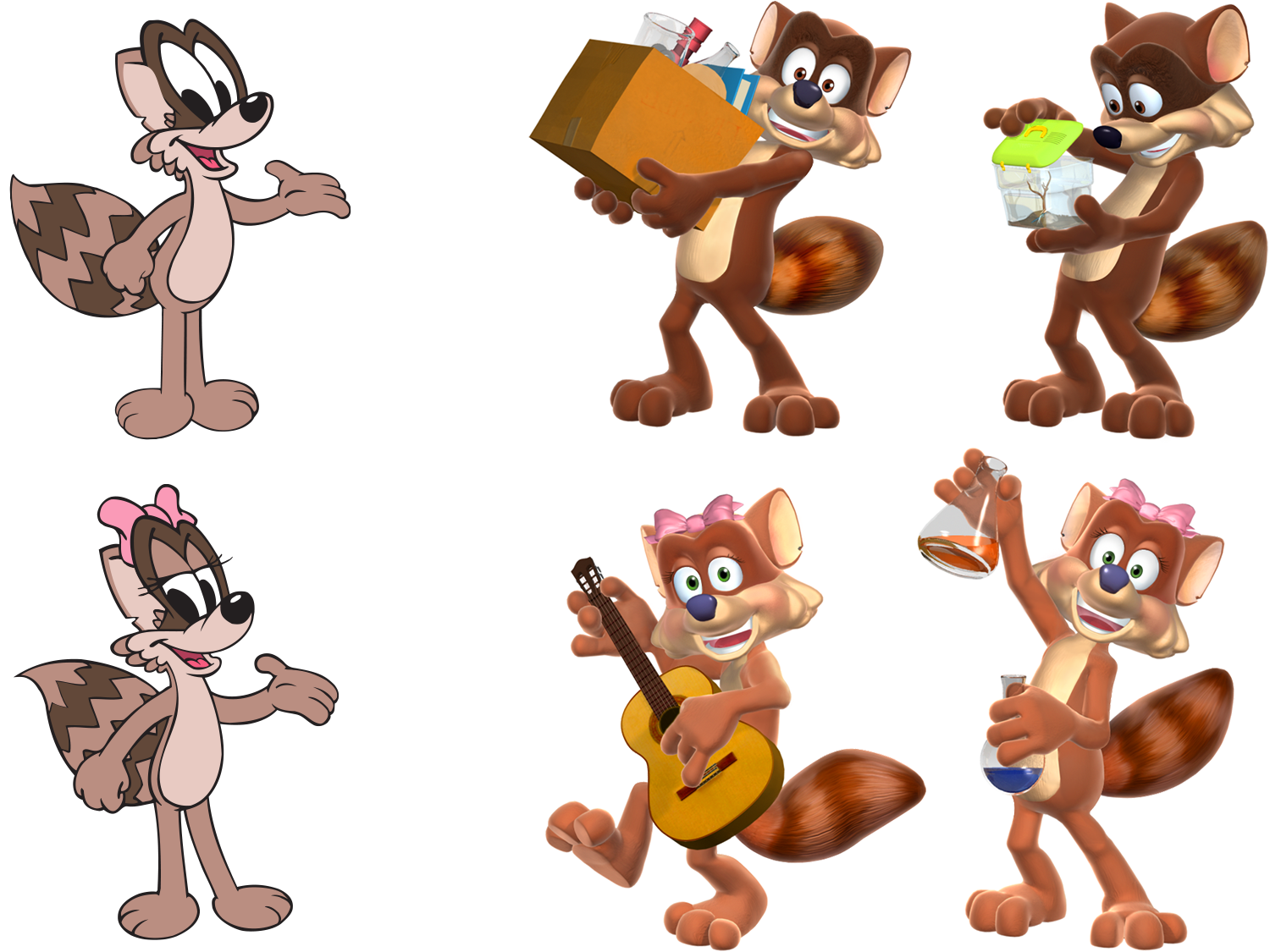
The original 2D raccoon hosts, Rusty and Rosy, were redesigned in 3D. They introduce activities and are used in promotion.
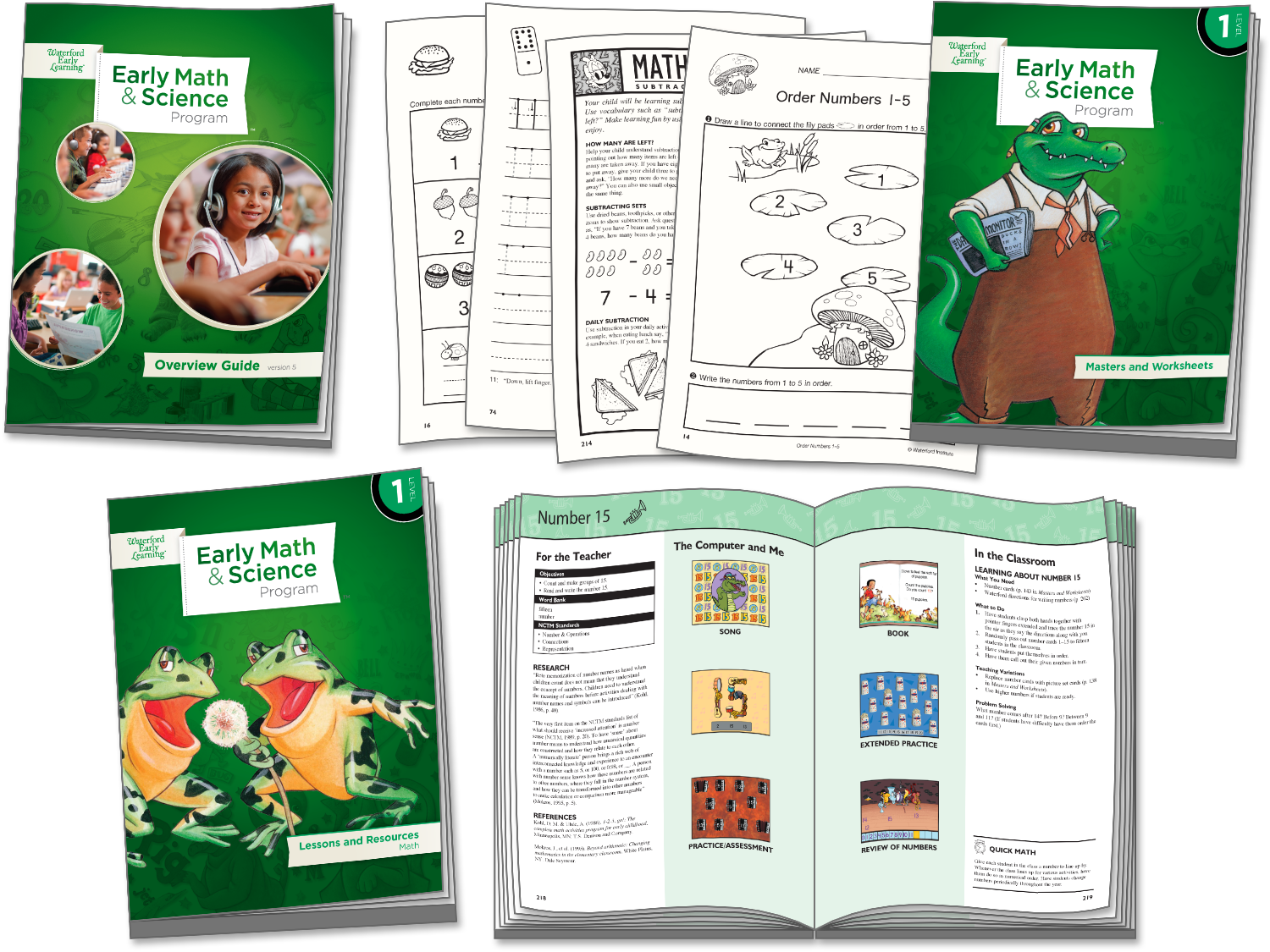
Some of the 10 teacher guides for Early Math & Science: Overview Guide, Masters and Worksheets, and Math Lessons and Resources.
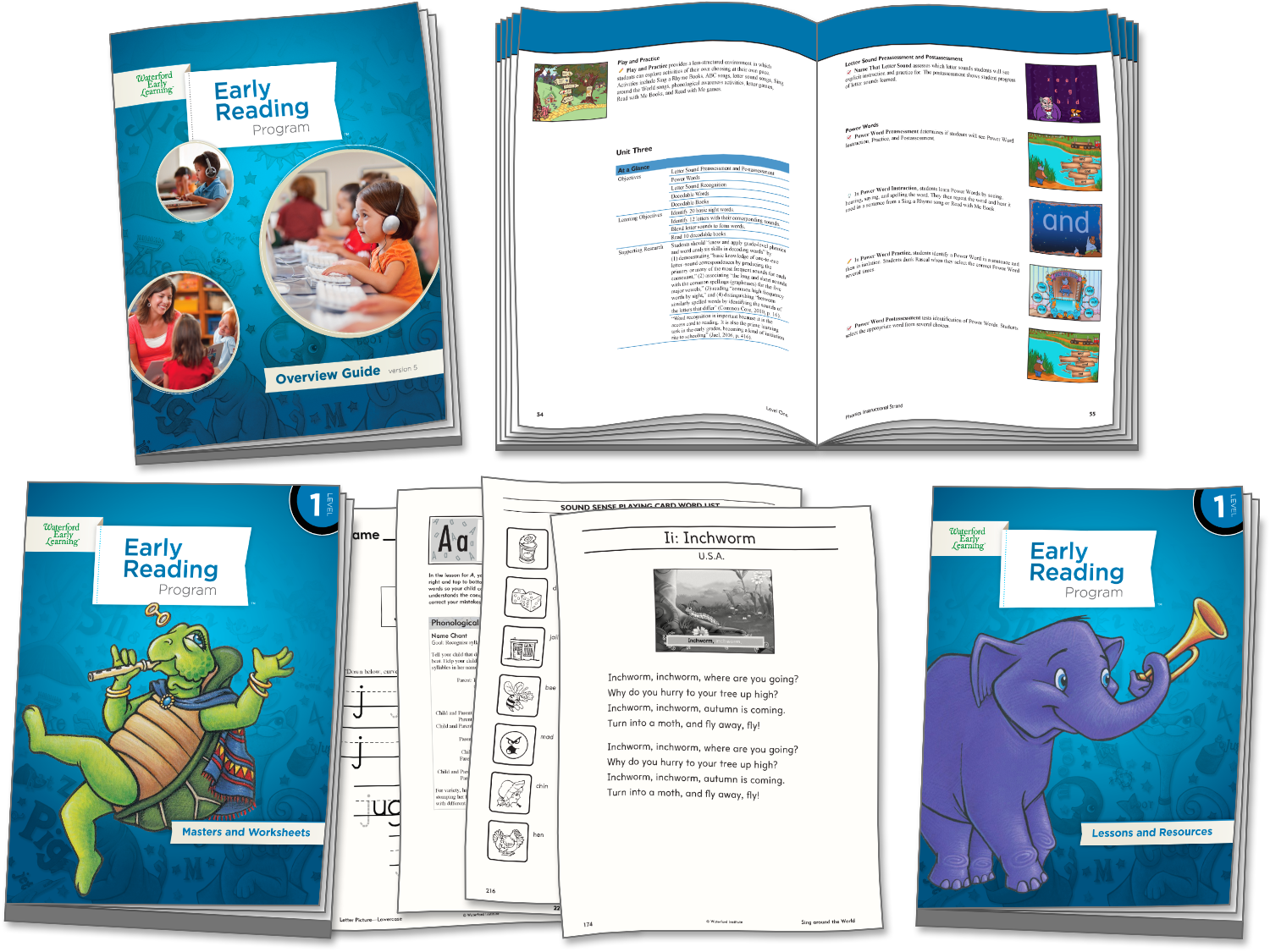
Some of the 14 teacher guides for Early Reading: Overview Guide, Masters and Worksheets, and Lessons and Resources.
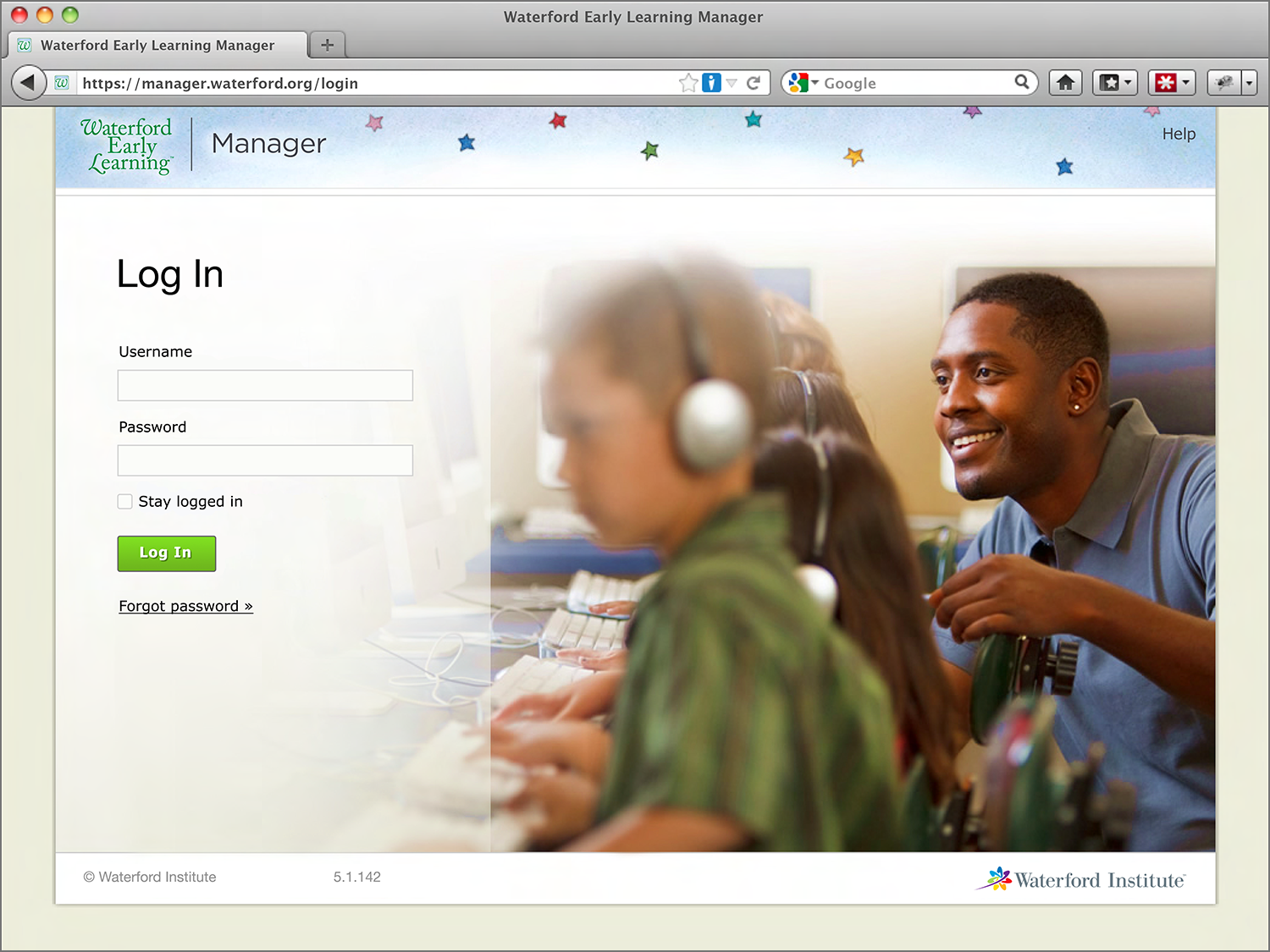
The Log In screen of the Waterford Manager, used by teachers to administer the product, manage students, and access reports.
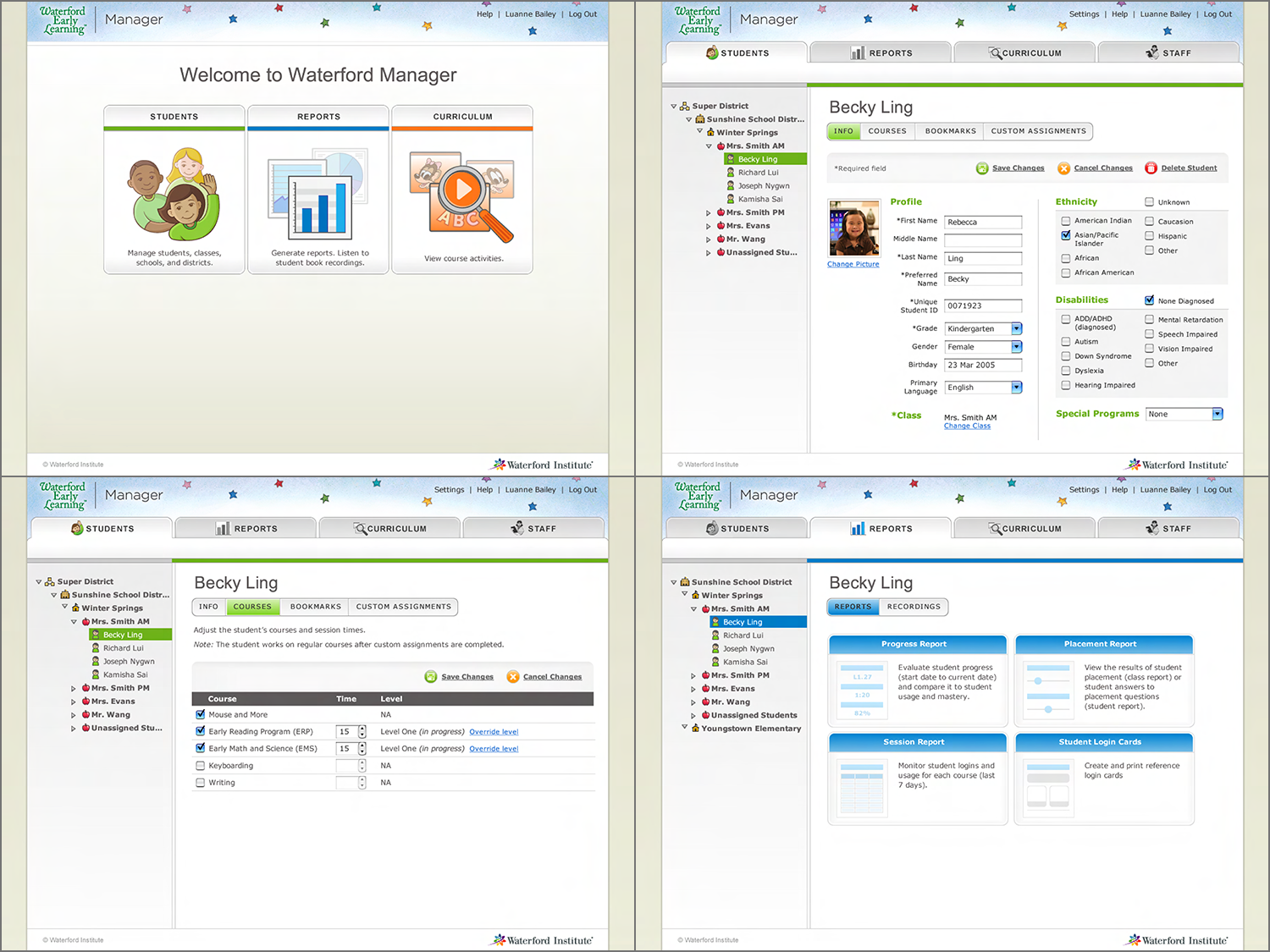
Screens under the Students and Reports tabs of the Manager, which allow the teacher to input/upload student info and access reports.
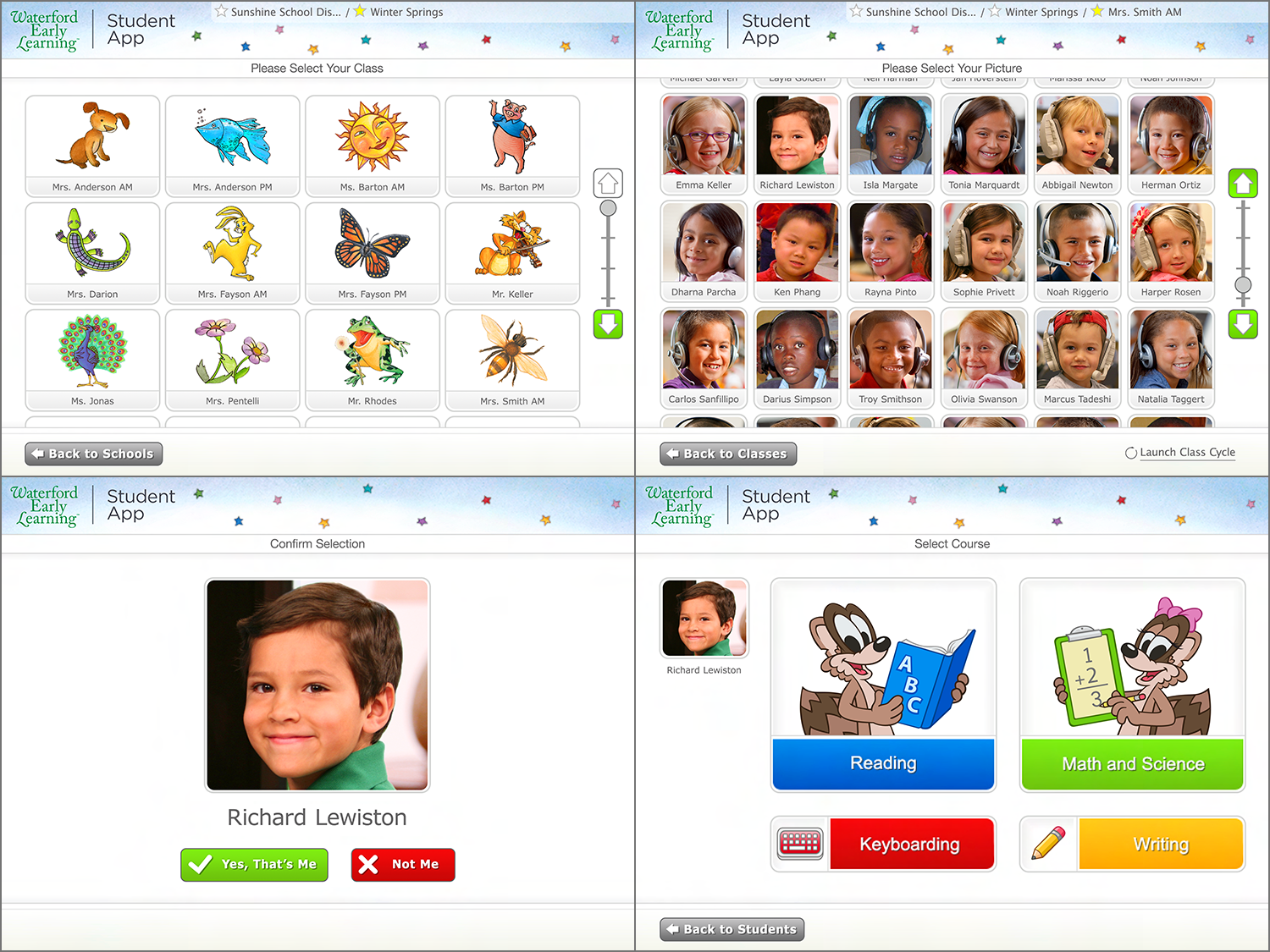
Screens from the Student App. In this walk-up model, the student chooses their class, picture, and program to begin a session.

Sample pages from the Marketing Style Guide, which defines the product’s logo usage, color palette, fonts, and website design.

Several examples of product marketing materials, including sales sheets and brochures for U.S. and international markets.
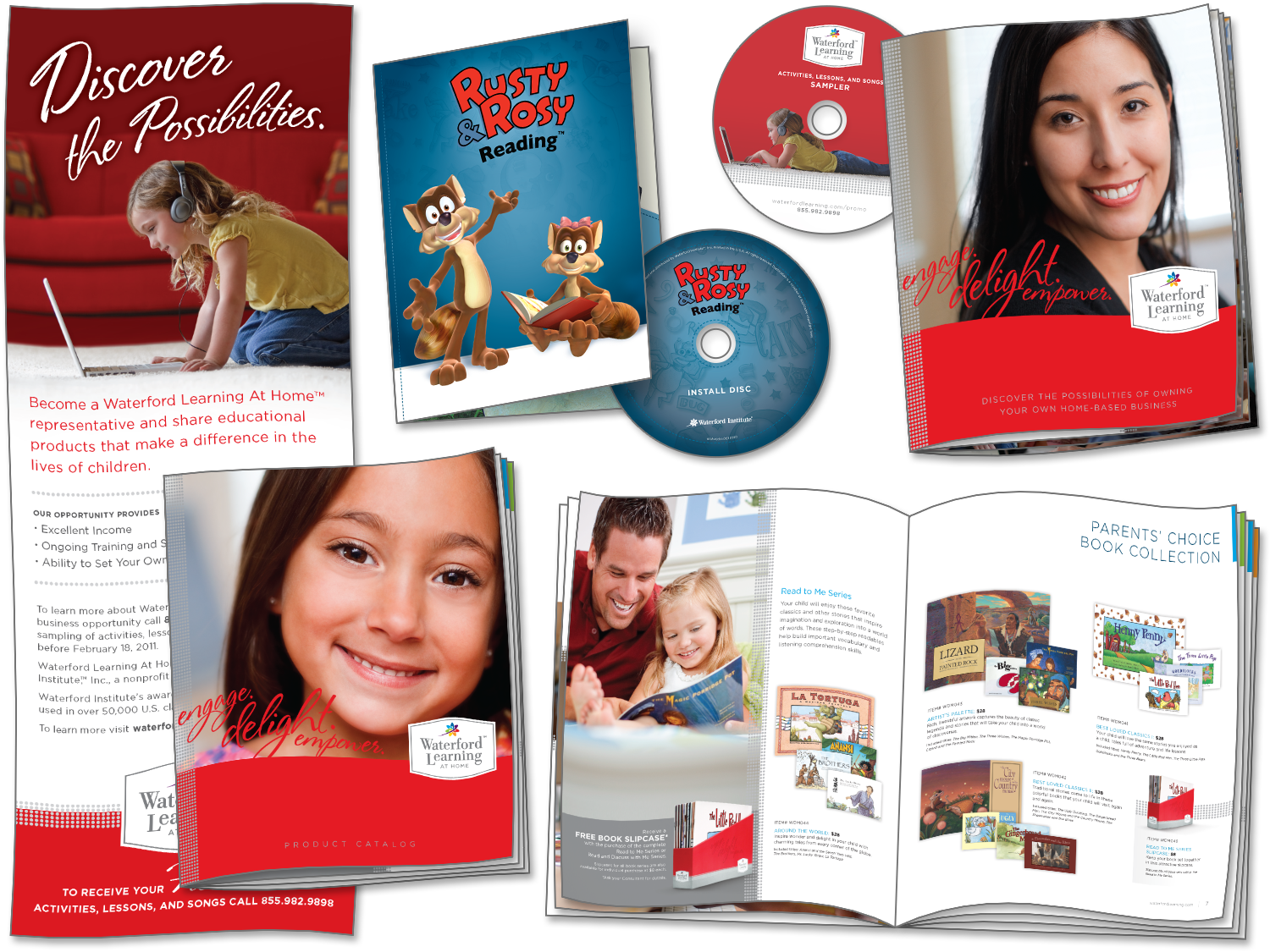
Repackaged as Rusty & Rosy Reading, the marketing materials include a DVD promo, informational booklet, and sales brochure.
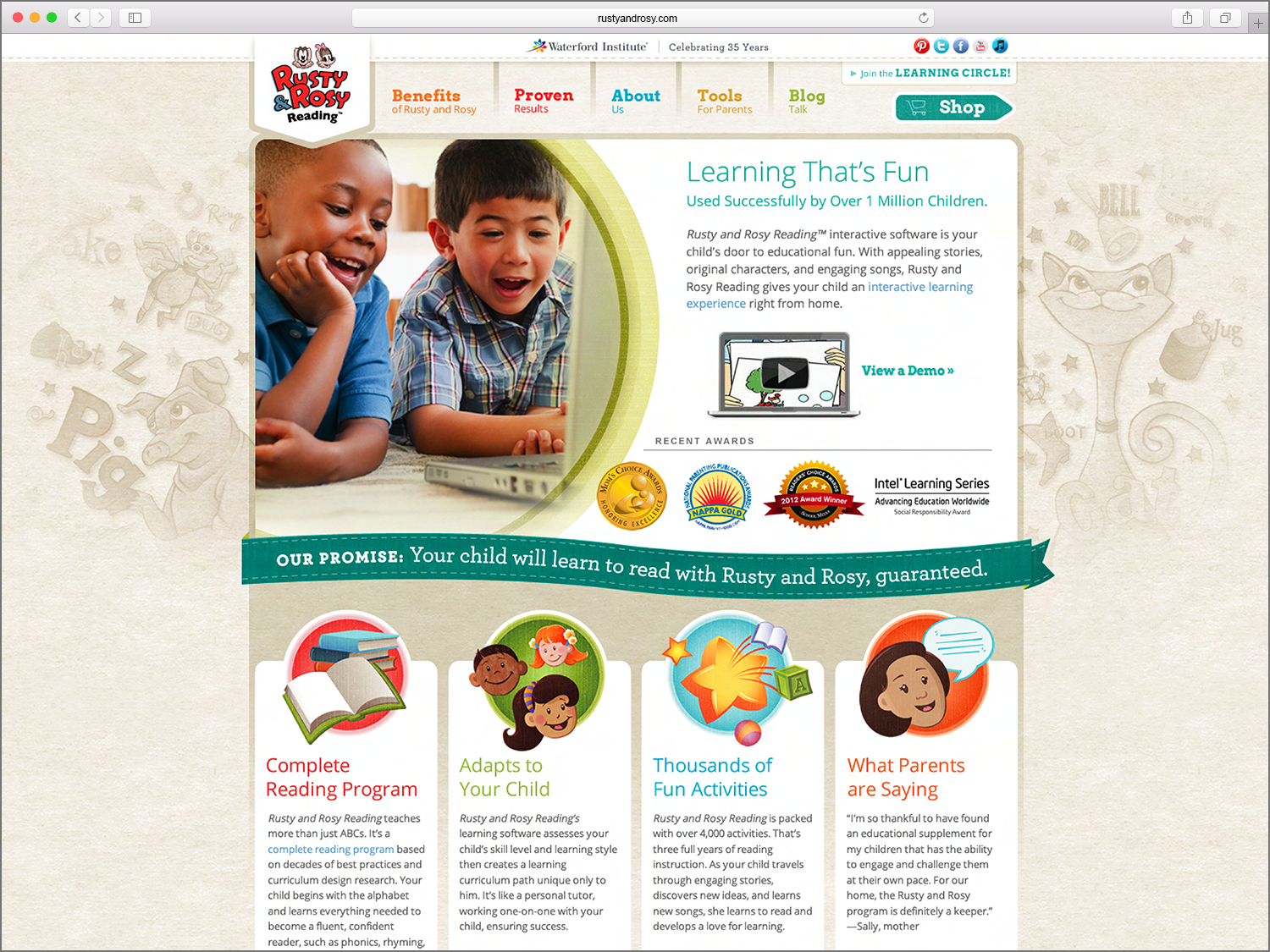
The landing page of the Rusty & Rosy Reading website provides access to a product demo, parent testimonials, and product store.
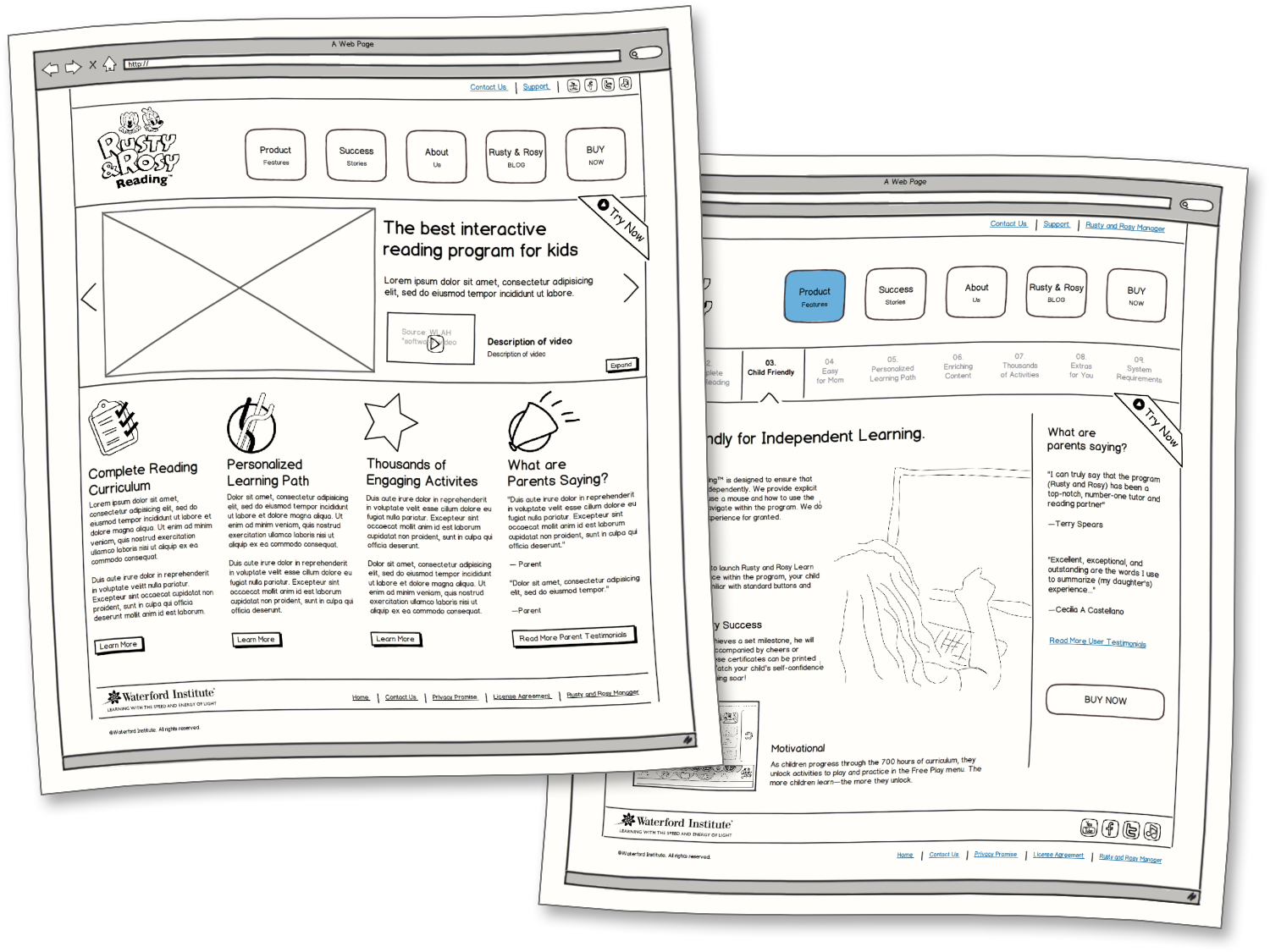
Examples of UI design wireframes used to develop the Rusty & Rosy Reading website. Typically, wireframes are iterated several times.
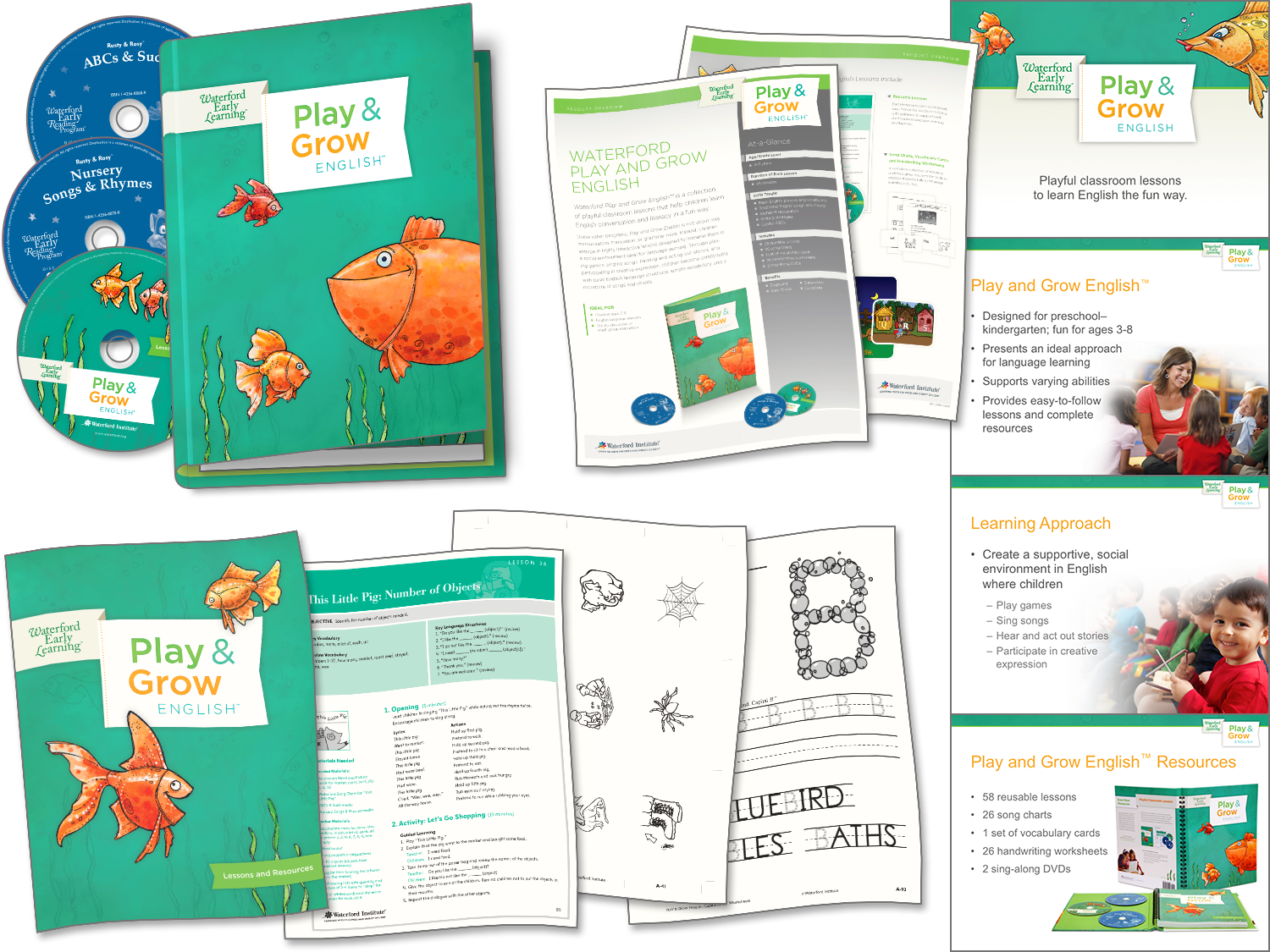
Packaging and marketing for Play & Grow English. Portions of the flagship product were re-purposed for this international program.
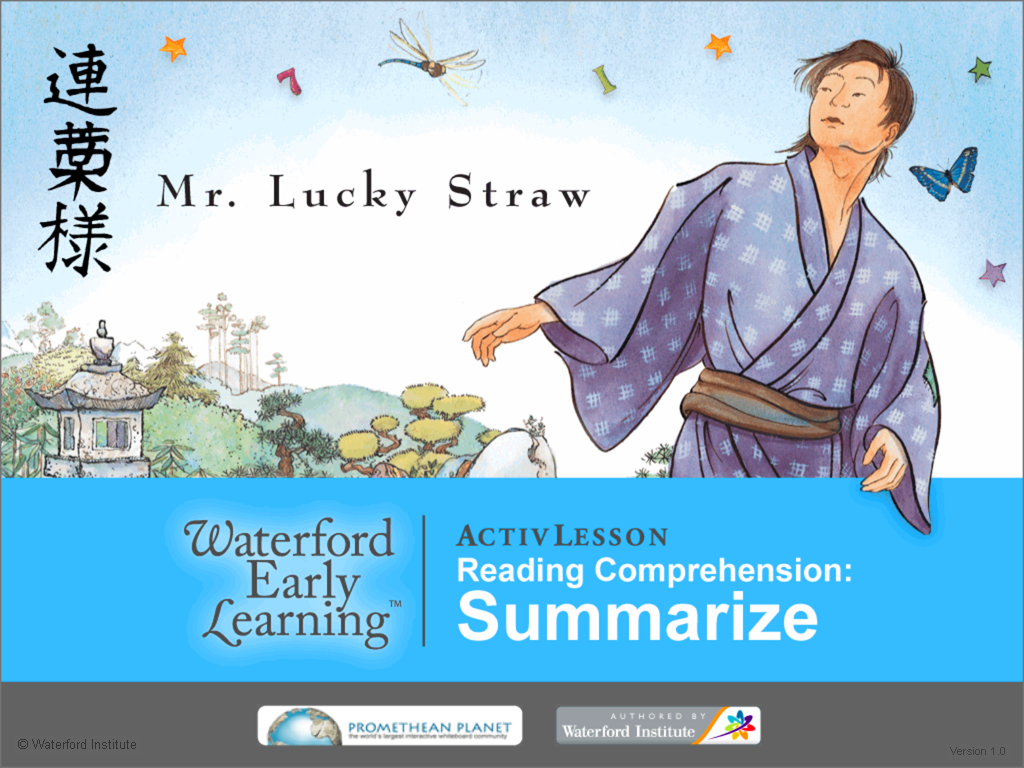
Sample screen from one of the 16 Reading Comprehension modules of the Interactive Whiteboard Lessons product.
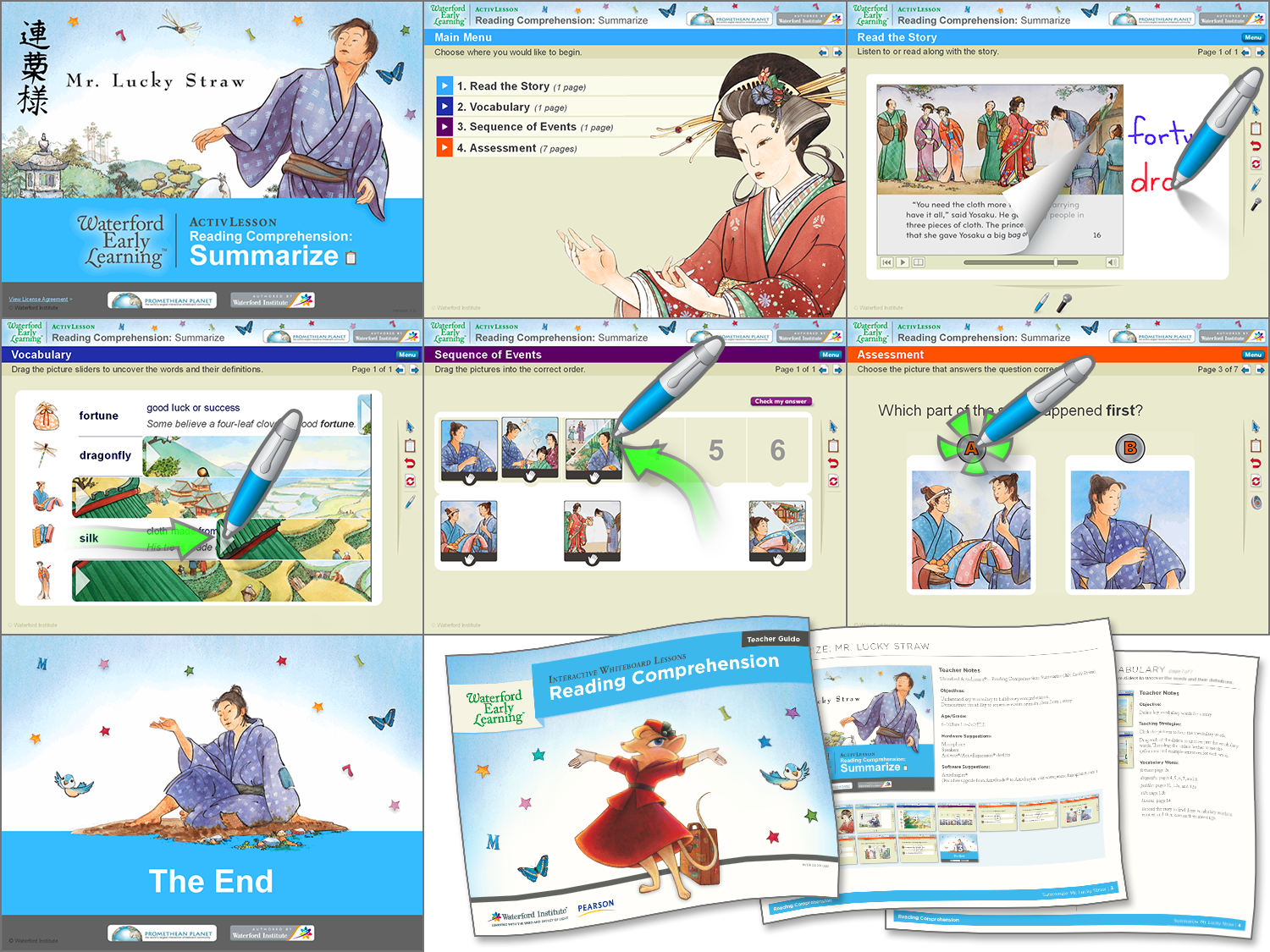
Screens from a Summarize lesson of the Interactive Whiteboard Lessons product, including pages from the Teacher Guide.
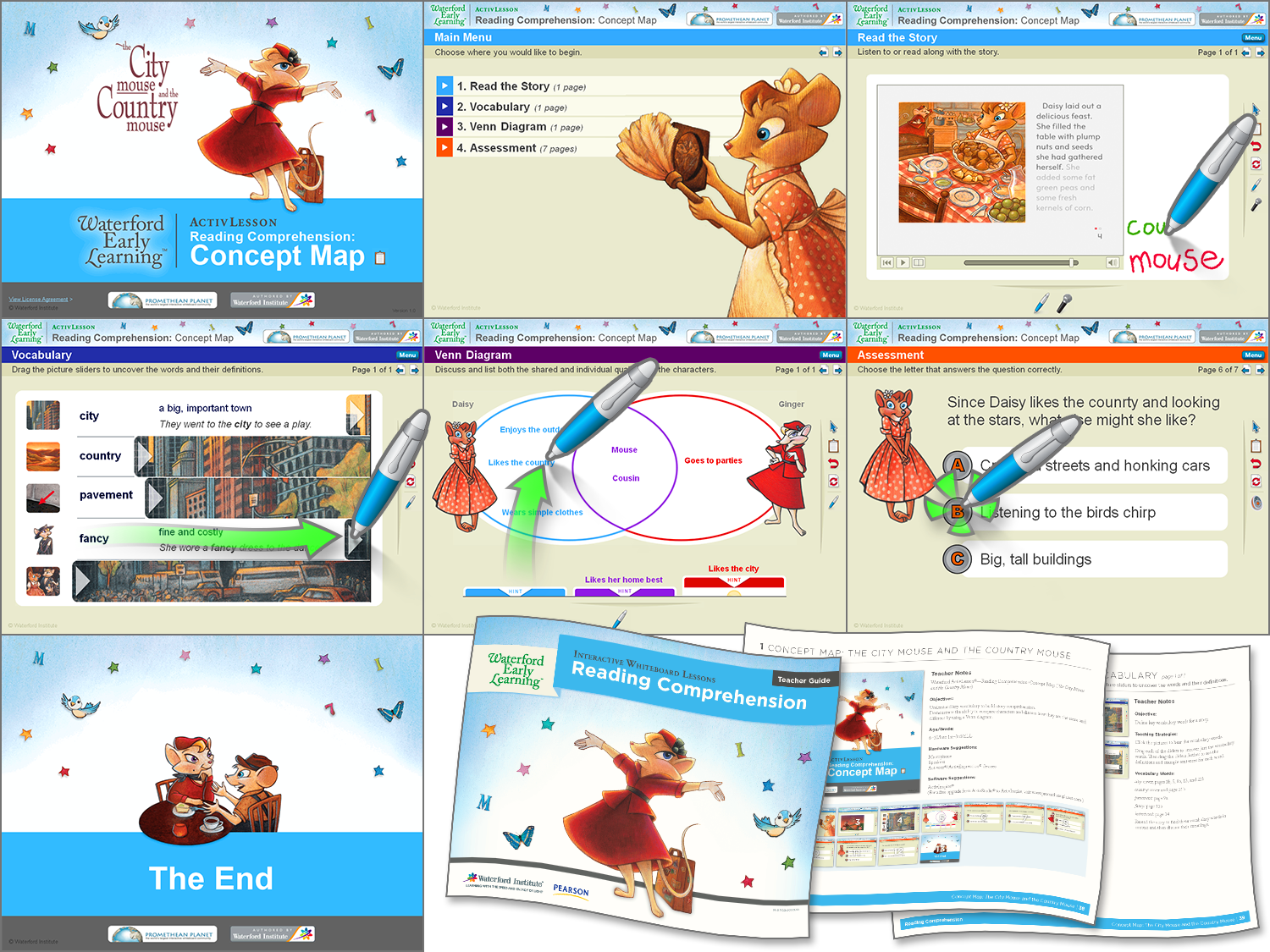
Screens from a Concept Map lesson of the Interactive Whiteboard Lessons product, which is meant for whole-class instruction.
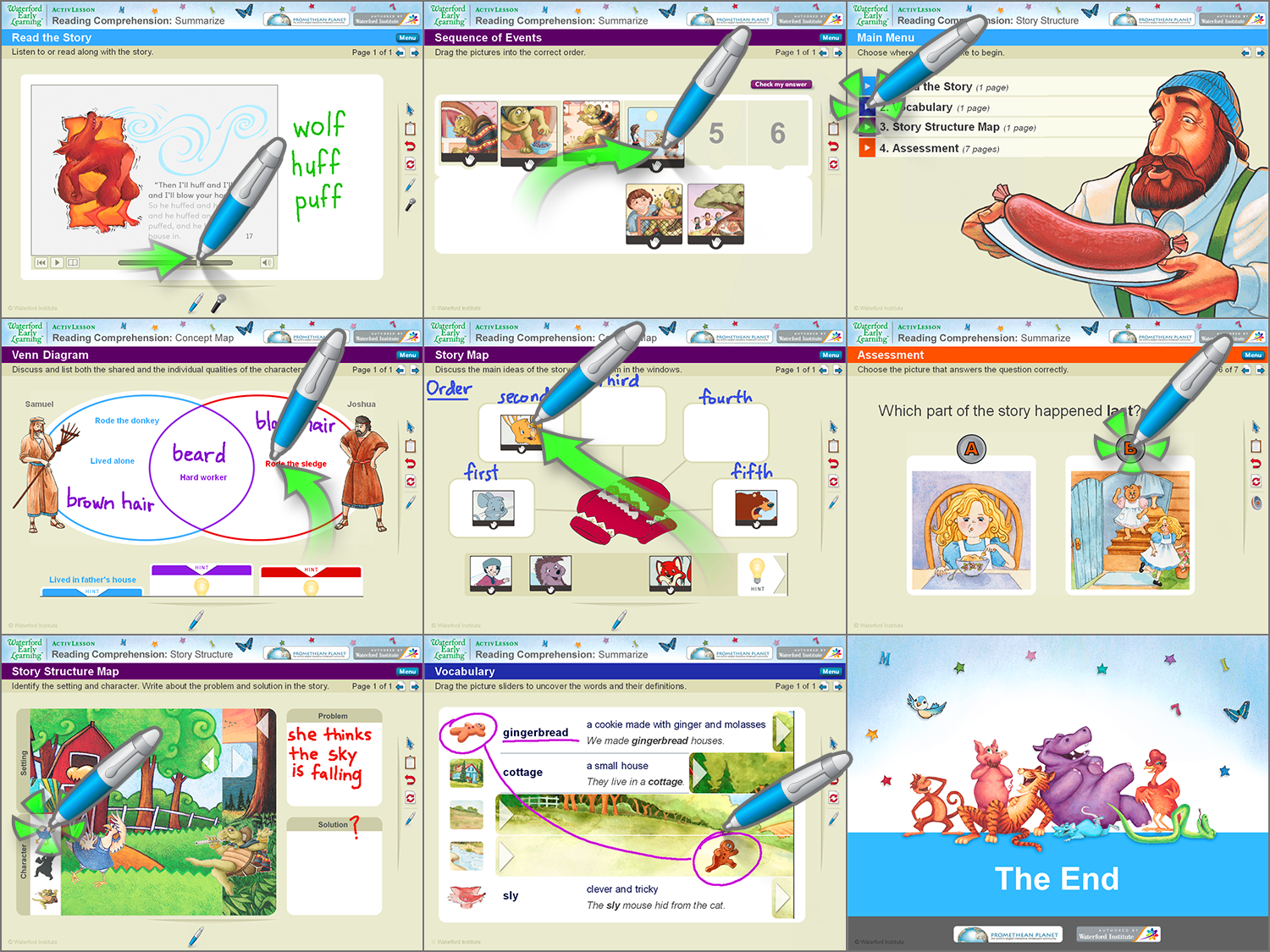
Screens from Reading Comprehension lessons show a variety of interactions: Venn diagrams, vocabulary sliders, and story maps.
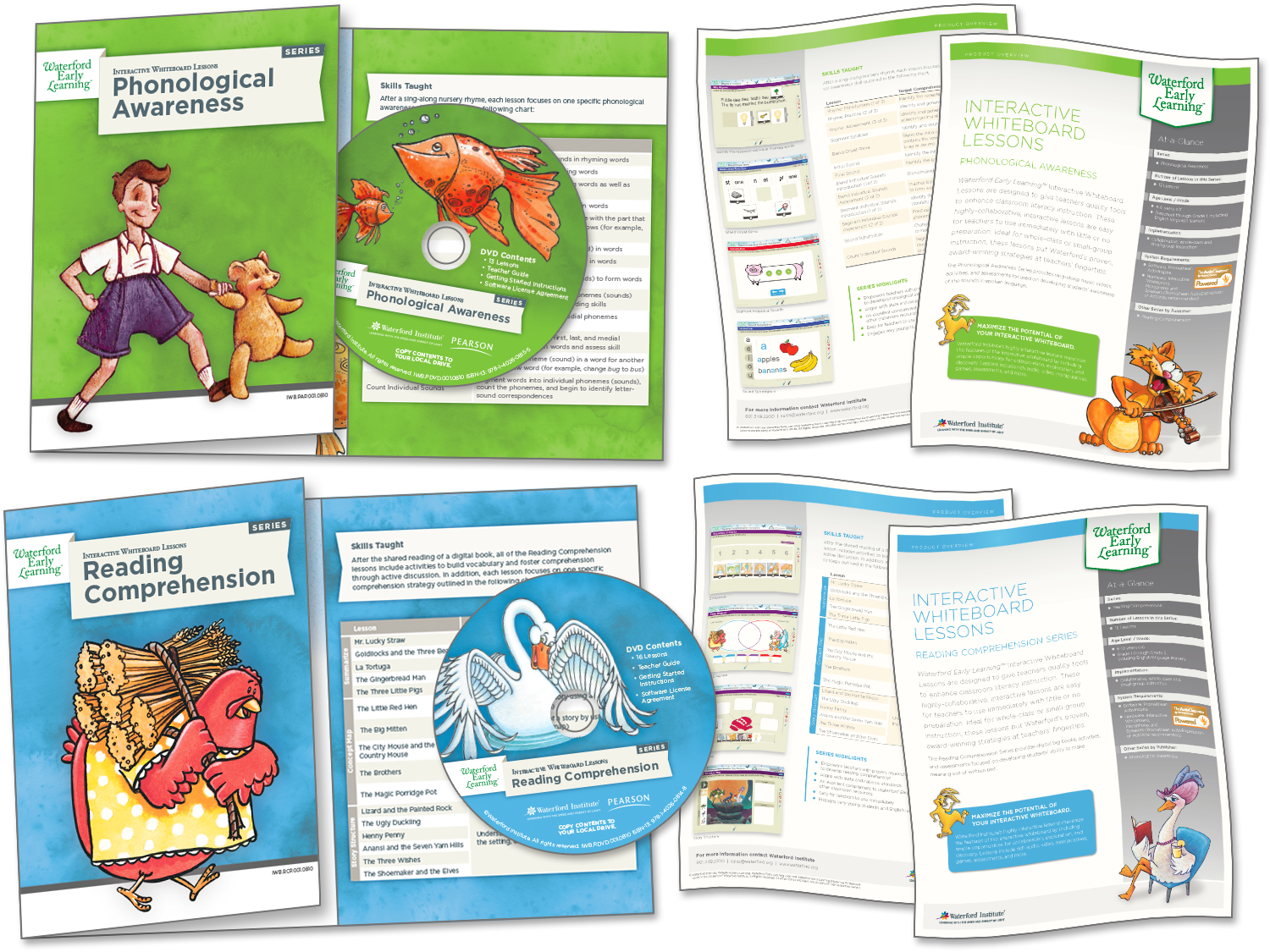
Packaging and sales sheets for the Phonological Awareness and Reading Comprehension modules of the product.
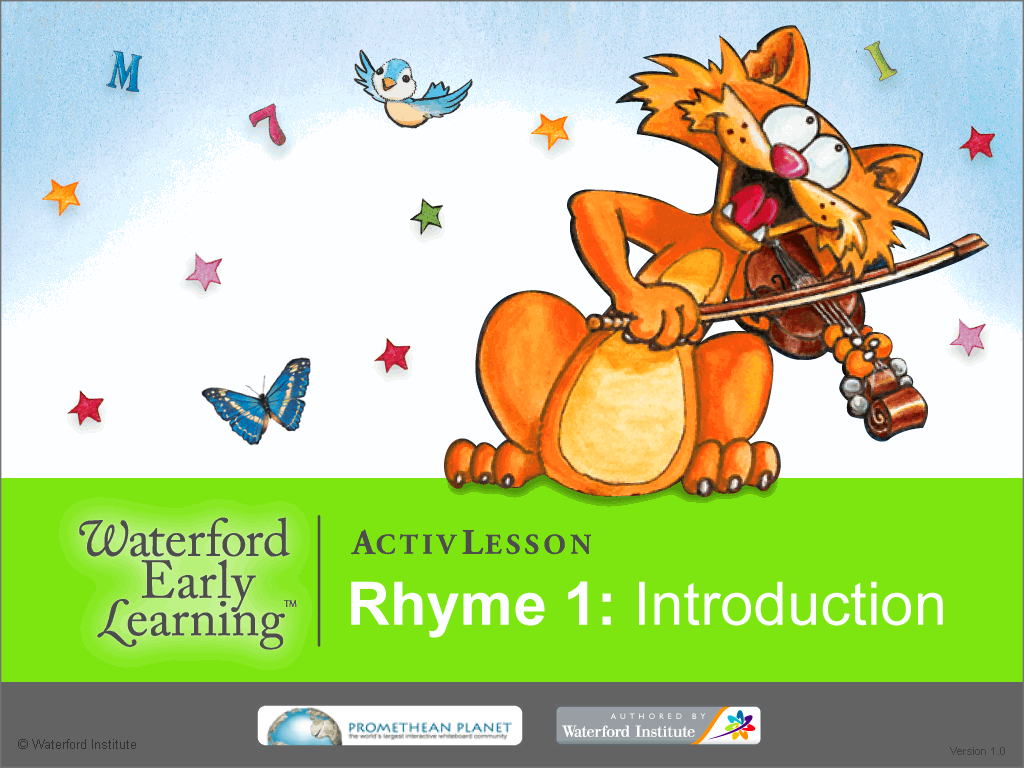
Sample screen from one of the 13 Phonological Awareness modules of the Interactive Whiteboard Lessons product.
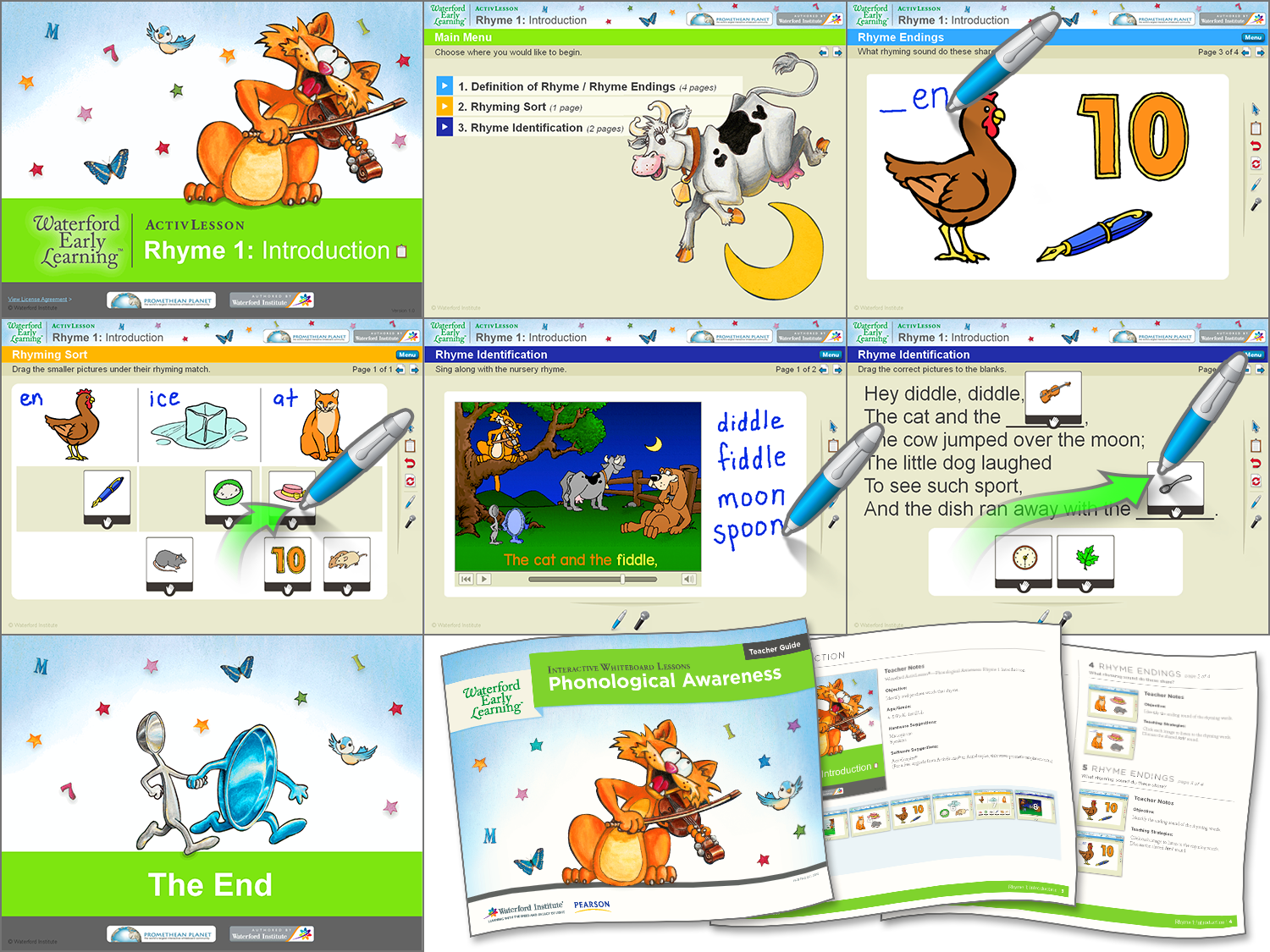
Screens from the Rhyme Introduction lesson of the Interactive Whiteboard Lessons product, including pages from the Teacher Guide.
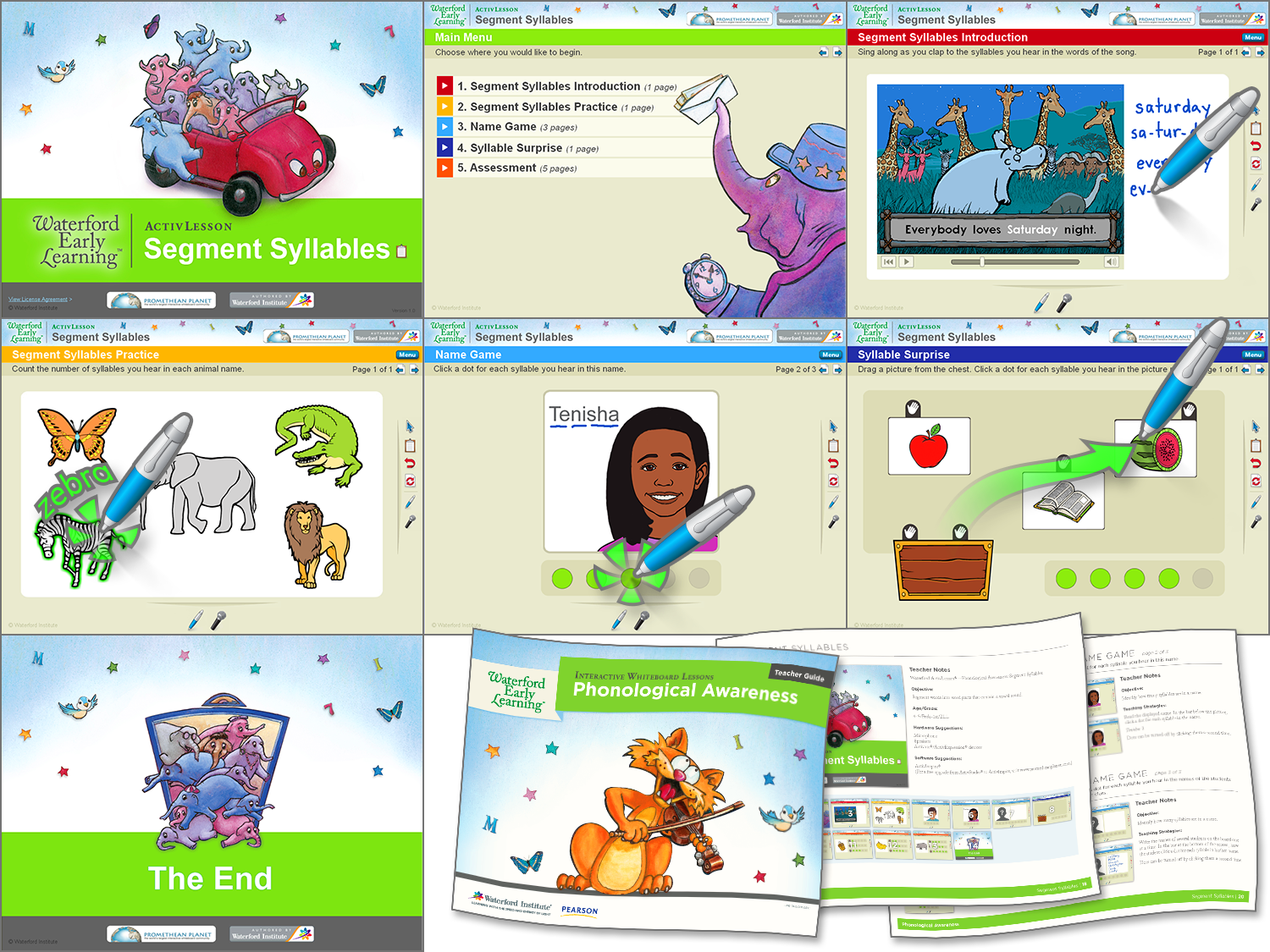
Screens from the Segment Syllables lesson of the Interactive Whiteboard Lessons product. This lesson includes practice activities.
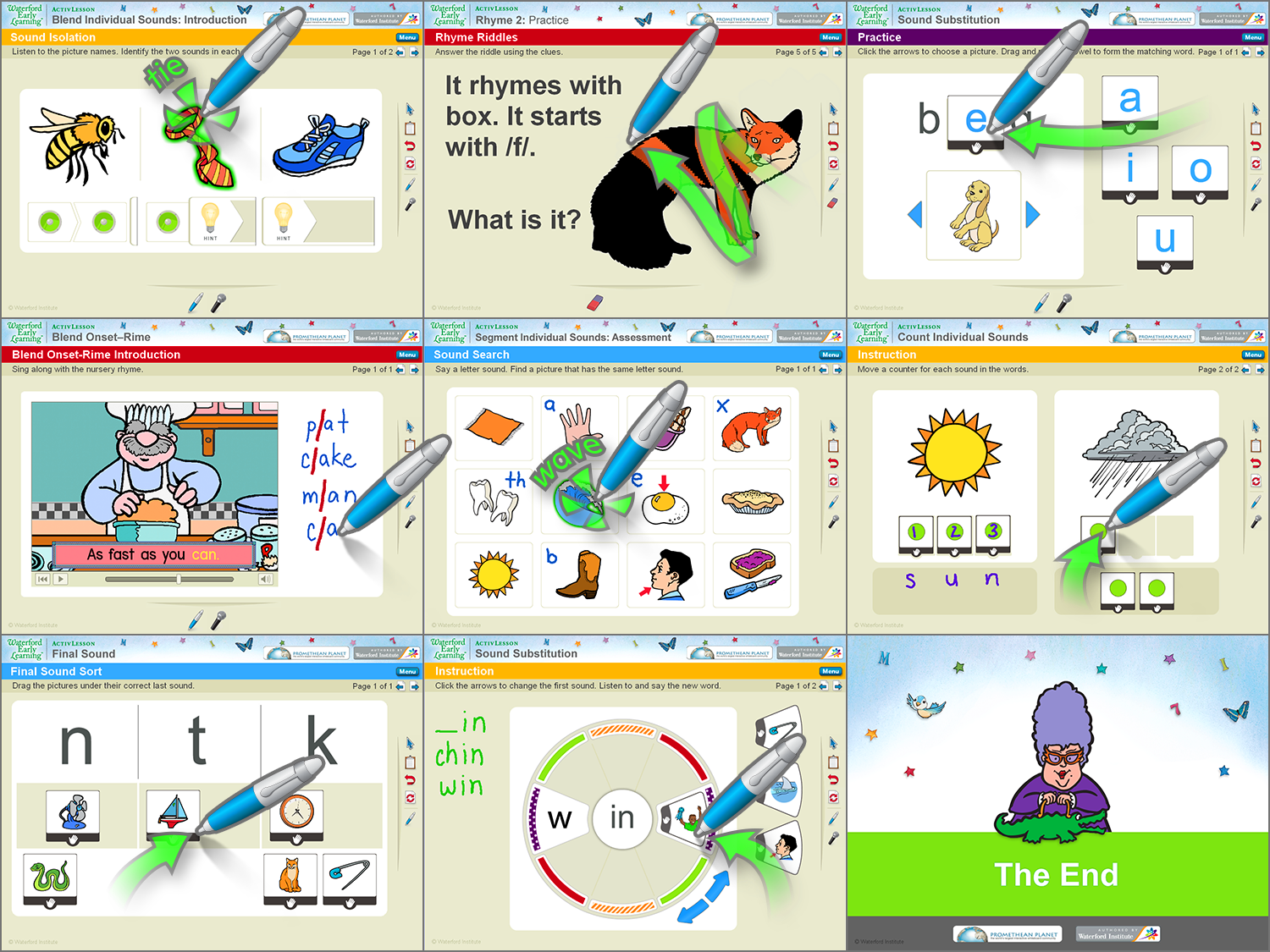
Example screens from Phonological Awareness lessons show a variety of interactions: sing alongs, picture reveals, and wheel sliders.
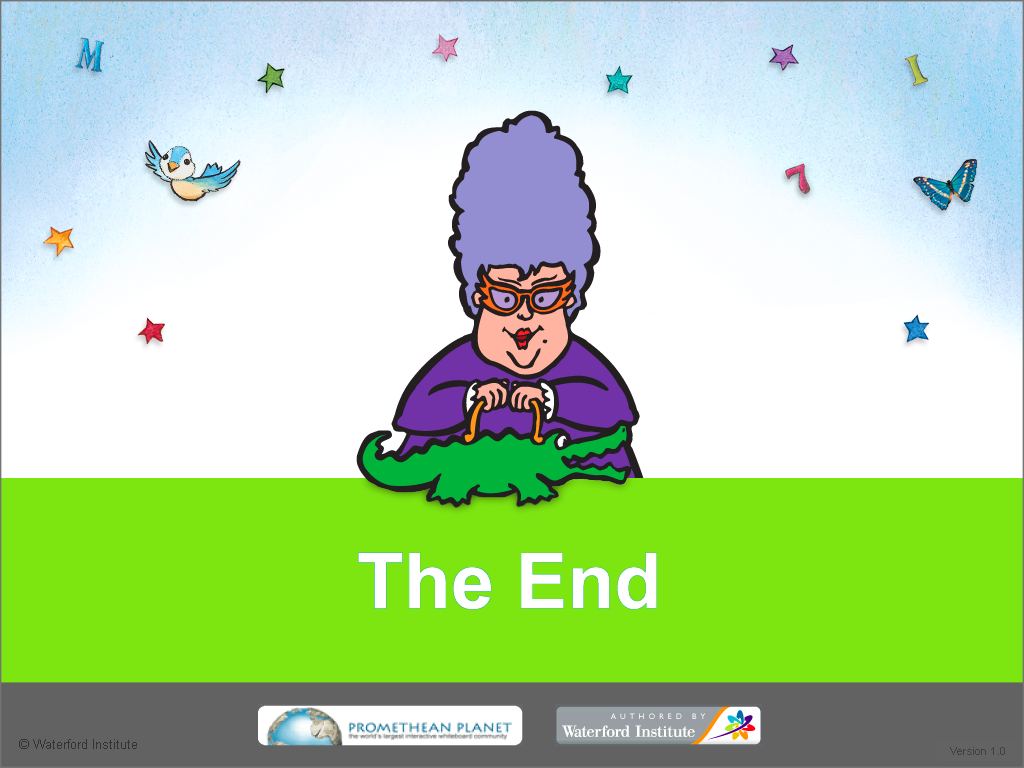
End screen from the Blend Individual Sounds Assessment lesson of the Interactive Whiteboard Lessons product.
Design + Production Notes
I joined Waterford Institute in the role of Art Director in the middle of the development of the math and science component of the Waterford Early Learning program. Since the eclectic art style had been previously established, I focused on improving quality and consistency, updating production tools, revamping processes and procedures, and introducing on-going training opportunities. As I later took on the Creative Director role — overseeing all the media and design departments while also establishing a User Experience Design Department — my focus expanded to building a strong team commitment to quality and product engagement.
In our new process, we began prototyping and user testing our activities — utilizing rapid iteration techniques — before moving into production.
Our new UX Designers led this effort, with the intent that each activity would not only be highly interactive and engaging throughout, but would properly teach each activity’s educational objectives.
Once production was completed on all math and science activities, and a new set of phonological awareness activities developed for the reading component, we repackaged portions of the product to serve other markets: Rusty & Rosy Reading for home use and Play & Grow English for the international market. We also developed 29 new lesson modules to create our Waterford Early Learning Interactive Whiteboard Lessons product for whole-class instruction. I’m very pleased to know that hundreds of thousands of children around the world learn from these products each year.










All media © Waterford Institute.
